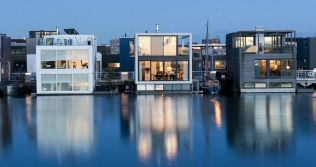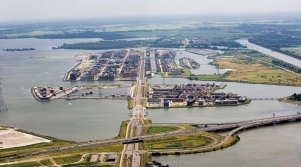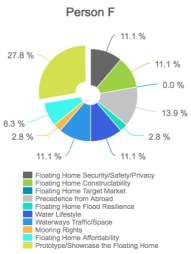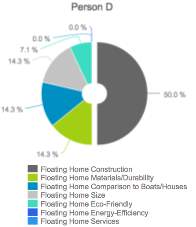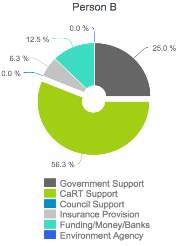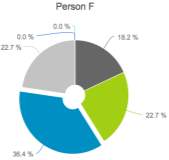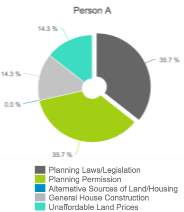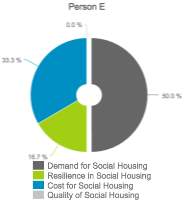Floating Home as a Flood Resistant Housing Strategy
Info: 24639 words (99 pages) Dissertation
Published: 25th Oct 2021
Tagged: ArchitectureConstruction
Abstract
Global warming refers to the changing nature of climate; the rise in the global average temperature increases the inevitability of phenomena such as tsunamis, droughts and flood events. Flooding represents the most common natural disaster within the UK, where subsequent flood risk exposes the homeowner at a property level. Consequently, flood-resilient and resistant measures are critical to the safeguarding and preservation of property assets, as well as the country’s infrastructural systems. In the context of London, these assets are particularly concentrated at the waterway corridors.
Concurrently, social deprivation and the subsequent demand for social housing remains a prevalent issue in London. The delivery of affordable housing to meet the demand of an increasing population is slow and restrictive; subsequently, this places pressure on the Government to execute further measures. Notably, the top 10% most deprived households in the country reside in areas of high flood risk, particularly surrounding the River Lea in East London. In order to confront and mitigate flood risk in areas of social deprivation within London, this research project investigates and justifies an innovative measure: the Floating Home. The context of governance, planning procedures and urbanisation is explored, to further an understanding of how the Floating Home may be implemented within London.
The Floating Home represents an experimental and unfamiliar design in the UK, with its origins rooted in the Netherlands. The first prototype has recently been launched in Chichester, Sussex, under ownership of its founding company, Floating Homes Ltd. The technology behind the Floating Home is crucial to its distinction from other existing floatation and flood-resilient structures, which is explored in further depth within this study. The social, political and technological context of preceding case studies are also evaluated for further insight and comprehension. These case studies range from the single Floating Home dwelling in Chichester, the Urban Rigger affordable student accommodation in Copenhagen and to the floating houses in the city of IJburg in Amsterdam.
A contemporary case study has ensued in the vicinity of the River Lea in East London, within Haggerston, Hackney, where implementation of the Floating Home is conceivable. To assess the likelihood and viability of implementation in this area, interviews with stakeholders involved in the contemporary case study have taken place and formed the primary research phase of the project. Observations and statements were gathered from the participants, which included a property developer, the senior director of Floating Homes Ltd., a prospective Floating Home occupant, a neighbouring land-based property resident, a social entrepreneur and a structural engineer. The primary and secondary research has been analysed collectively to deduce any paradigms in the investigation and the subsequent findings are presented. The emerging paradigms consequently aided in determining opportunities and limitations surrounding implementation of the Floating Home in London. An opportunity is established where the Floating Home can be suitable for first time buyers, and where it represents a holistic flood-resistant measure and coheres with a need for new technology within existing flood-proof measures. A limitation associated with the original hypothesis lies where the Floating Home is not perceivable for social housing. Additionally, further research is required to deduce which governmental bodies would need to be approached for implementation of the project, as well as further investigation surrounding London urbanisation and running out of land to justify building out onto water for the Floating Home, where sufficient evidence was unattainable within this project.
Table of Contents
1 Introduction………………………………………………………..
2 Literature Review…………………………………………………….
3 Methodology……………………………………………………….
4 Findings…………………………………………………………..
5 Discussion…………………………………………………………
6 Conclusion…………………………………………………………
7 References…………………………………………………………
1 Introduction
1.1 The Problem
Climate change has instigated an exponential rise in sea levels, droughts, increased precipitation and increasing variations in global and local temperatures. NASA (2017) have predicted that by the end of the 21st century, a larger proportion of rainfall will occur within a shorter amount of time, particularly concentrated within the Northern hemisphere and including the UK; this increases variability and uncertainty surrounding the future risk of flooding. Flooding stands as a significant national phenomenon and one of the most expensive natural disasters for the UK economy. Set against a backdrop of continual flooding within the UK, Her Majesty’s Government (2016) estimated 2.4% (8 million) properties are at risk from damage through sea and river overflow; the 2007 floods alone saw a total of £3 billion in damages. HM Government (2016) have dedicated a budget of £700 million to spend on flood defences and strengthening the nation’s resilience up to 2021, and subsequently stated their plans to seek out new approaches and initiatives. Borrows (2007) maintained that the aftermath of flood events is minimised through resilience in property and infrastructure, as well as initiative from the public, so that lives are not at risk, damage is reduced and recovery is expedited. Direct defences cannot and should not always be relied upon with uncertainty surrounding future flooding, where the issue of resilience is made more crucial (Borrows, 2007). Accordingly, a focus and dependency on property-level resilience is paramount to managing risk of damage for UK civilians.
London is situated within a major England floodplain and is subsequently vulnerable to fluvial flooding. Notably, the Environment Agency (2016) stated that 2013-14 saw 50 closures of the Thames River Barrier, set against the annual average of five times since 1982. The Thames Estuary also represents the second largest river basin in the UK, with a size of 12,935 km2 (HM Government, 2016). The risk of flooding places great reliance on the Thames River Barrier direct defence system. In 2009, the Institution of Civil Engineers (ICE) called on the Government for more integrated solutions and innovative long-term local strategies in defence against flooding. With these concerns in mind, the vulnerability and protection of the capital remains at the forefront for Government defence strategies on a macro-scale (direct defences) and a micro-scale (property-level protection).
Currently, London encounters a shortage of 49,000 homes, coupled with a growing demand from a population of 8.67 million civilians and a projected 10 million by 2030 (Greater London Authority, 2015). The Callcutt Review (2007) identified a risk of ‘running out of land’ with regards to new housing developments, pushing property prices up and placing further pressure on the Government to provide affordable social housing for vulnerable low-income families and individuals. To tackle the London housing crisis, the solution to build outwards onto water appears as an increasingly viable solution, as countries such as Holland and Denmark have previously succeeded. London Assembly (2013) highlighted an opportunity to utilise over 100km of waterways,under ownership of the Canal and River Trust (CaRT).
1.2 Scope of the Project
ICE (2009) specified that to handle the inevitability of a changing environment, a long-term initiative must be adopted to alleviate the future effects of flooding as well as providing for a vulnerable population. Due to this two-fold concept, a technological and innovative solution is evaluated within this research project.
Williams (2009, p.12) explained that ‘Aquatecture—derived from merging water and architecture—pertains to building types and adaptive re-use strategies that mitigate and manage flood related threats’. The notion of Aquatecture is found in floatation structures, such as the Floating Home, which is designed as a holistic flood protective strategy and adapts to rising water levels. Considering flood resistance as a major aim, this dissertation makes a detailed evaluation of existing floatation structure case studies inside and outside the UK, to inform the feasibility for implementation of a Floating Home within London. Resistance and resilience is evaluated on a property level and, therefore, a large-scale infrastructure level is not considered. A literature review is also utilised to discover an opportunity for the Floating Home, as well as stakeholder interviews as part of a contemporary case study to determine how the Floating Home may be implemented from a social, political and technological standpoint.
Through utilising untapped waterways in areas of deprivation, this research project also explores the potential for the Floating Home to be made affordable and subsequently viable for social housing. Due to uncertainty and a lack of available research surrounding floatation structures as affordable social housing and none present in the UK, this forms the secondary aim within the research project.
1.3 Aim and Objectives
The aim of this research project is to assess and evaluate the potential of the Floating Home as a viable flood-resistant housing strategy, with the prospect of an affordable social housing solution within London, UK.
The objectives of this project are:
- To investigate the context of flooding and social deprivation within London, UK, as well as a supplementary background overview on governance and planning procedures.
- To study the design, construction and technology behind the Floating Home and existing floatation structures.
- To evaluate the feasibility and viability for implementing the Floating Home in Haggerston, London.
- To define the opportunities and limitations of the Floating Home.
- To propose recommendations for future implementation.
1.4 Limitations of Research
Floatation technology is present in the UK; however, developments remain limited. Large-scale floatation developments mainly subsist outside the UK, particularly in countries such as Holland and Denmark. Therefore, differences in foreign planning practices must be considered. Particularly where affordable social housing is concerned, this remains absent in floatation technology and serves as a major limitation within the research project. This dissertation considers the viability of the Floating Home within London: it should only be viewed as a guide for other areas in the UK, seeing that each county may hold differences in political and social acceptance.
1.5 Chapter Overview
Chapter 2 evaluates existing literature, to determine an opportunity for implementation of the Floating Home. This includes a review of literature related to flooding, social deprivation, governance, planning, floatation technology and explores existing floatation case studies.
Chapter 3 outlines the methodology employed for the research project. It compares the uses of primary and secondary research, as well as qualitative and quantitative analyses to determine an appropriate methodology for the purposes of this dissertation. A data analysis framework has also been designed to provide a foundation for selection of appropriate data.
Chapter 4 reports on the contemporary case study and stakeholder interview findings following analysis, accompanied by tables of data, graphics and quotations from participants in the data research.
Chapter 5 discusses the findings from the interviews and makes comparisons and contrasts with the research literature review and secondary case studies. Any initial assumptions are discussed as to their validity and how well the data has corresponded with these.
2 Literature Review
2.1 UK Flooding
Rising sea levels, coupled with an increase in storm frequency, shifts an overwhelming reliance on the UK’s flood defence methods and systems. The 2009 Climate United Kingdom Projections (UKCP09) forecasted a sea-level rise of up to 76cm by 2095, with an ‘extreme’ upper bound of 190cm (United Kingdom Climate Projections, 2009 cited by ICE, 2009, p.4). An upsurge in subsequent flood events poses a great risk and heightens vulnerability in areas such as London, representing one of the world’s financial centres and most densely-populated and deprived cities.
Whilst the Thames defences currently offer adequate safeguarding, Stern (2006) emphasised:
- The system will only provide protection for a 1-in-1000-year flood event until 2030.
- Afterward, flood risk will increase and protection will reduce to provide for a 1-in-50-year flood event by the end of the century.
Stern (2006) highlighted that slight modifications may maintain and extend the defence’s design life, but a long-term strategic approach is still required. It must be noted that whilst the Stern Review (2006) is a widely-cited publication, any modifications to the defences since 2006 may have improved the mentioned statistics. Nonetheless, the EA (2012) emphasised that the River Thames forms an immediate corridor between major assets at risk of flood damage; these include infrastructure, transport, housing and parliamentary buildings within London. Savills (2016) stated that the total value of London’s properties quantifies a quarter of England’s total property value, whilst surrounding the UK’s second largest river basin. This places London’s assets at a much larger risk compared to the rest of the country.
2.1.1 Construction on Floodplains
A floodplain represents an area of low-lying land, generally located adjacent to a stream or river, where during a flood-event, is most susceptible to flooding. As major architects in the ‘Aquatecture’ field (term defined in section 2.5), Barker and Coutts (2016) underlined that much of the UK population reside next to areas of high flood risk, such as river systems, deltas and costs, drawn there by fertile land and the attraction of waterfront developments. Since the 1900’s, half of the world’s wetlands, which act as natural storm buffers, have been lost due to urbanisation and settlements developing adjacent to river basins (United Nations Environment Programme News Centre, 2012, cited by Barker and Coutts, 2016, p.19). This raises the exposure of properties to flood risk even more so and, as settlements expand, stress on water resources increases (Barker and Coutts, 2016).
Whilst Barker and Coutts (2016) recognised the attraction of fertile land and living by the water, it can also be argued that land prices are typically cheaper within areas of high flood risk, making it a profitable investment for landlords. Within the UK, Priestly and Smith (2016) stated that although three-quarters of properties exist in floodplain areas of low-risk due to protection from direct defence systems, (i.e. areas with between a 1-in-100 and 1-in-1000 annual chance of flooding) there remains a quarter of developments constructed in high-risk areas, with a 1-in-100 or greater annual chance of flooding. Priestly and Smith (2016) also highlighted that 9% of these floodplain developments (23,000 new homes) are being constructed in areas with a 1-in-30 or greater annual chance of flooding, even where direct flood defences are in place. These expanding floodplain developments place further pressure on future flood protection strategies, to prevent greater damage should a flood event occur.
2.1.2 Existing Flood Resilience
2.1.2.1 Resilient versus Resistant Design
Flood mitigation measures are crucial to the safety of cities and properties, to minimise risk from water ingress and subsequent damage. Two approaches are utilised as defence against flooding: flood-resilient and flood-resistant measures. Butler et al. (2011) defined resilience as the capacity of a system or community, after exposure to hazards, to return to an acceptable level of functioning. Resilience can reduce the effect of water damage, even where water is allowed to enter a structure, such as a wet-proof resilient building, discussed in section 2.5.1. A flood protection measure designed to keep water out of a property is regarded as flood-resistant. Resistant measures offer a ‘peace of mind’ for property owners, however Lamond and Proverbs (2008) viewed the emotional stress of long periods of moving away from home would be minimised by resilient adaptation, should a resistant building prove inadequate.
2.1.2.2 Responsibility for Flood Mitigation
The administration and supervision of flood defences generally falls under the domain of the Environment Agency (EA), the Department for Environment, Food and Rural Affairs (DEFRA) and the local authorities; their responsibilities are outlined in Figure 2‑1. Where flood-proofing property on a micro-scale is concerned, Borrows (2007) emphasised that it is entirely up to the homeowner’s discretion. Consequently, Booth et al. (2009) stated that this sees only 6-9% of the household sector take measures at their own initiative; out of the 6-9%, most have experienced flooding. Emphasis is needed to raise the homeowner’s awareness of flood risk and protection.
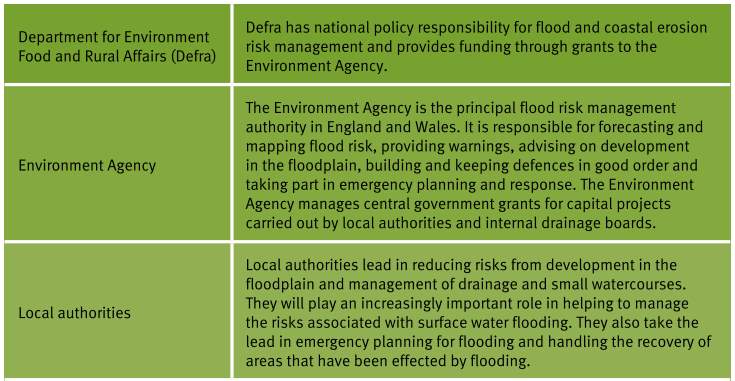
Figure 2‑1: Organisations responsible for flood risk management in the UK (EA, 2009)
2.1.2.3 Urban Protection and Property-Level Protection (PLP)
Flood defence systems exist on multiple scales: these range from coastal systems protecting the country as a first line of protection, to direct defences, such as the London Thames Barrier, protecting vital infrastructure. Typically, in urban areas, the threat of flooding also relies on the capacity of integrated storm water management systems such as Sustainable Drainage Systems (SuDS), to drain water from impermeable surfaces. An influx of water occasionally exceeds the capacity of the system, causing overflow and increasing the risk of local flooding. Dickhaut et al., (2011) argued that the presence of such systems also sees a reduction of evaporation into the atmosphere, increasing the ‘heat island effect’ (where urban areas are significantly warmer than the surrounding rural areas) and enhancing the effects of global warming. Utilising natural systems in urban environments, such as Water Sensitive Urban Design (WSUD) and employing effective Property-Level Protection (PLP) strategies are examples of sustainable water defences on various scales.
Lamond and Proverbs (2008) viewed that the immediate instinct of a floodplain resident is to keep water out their home and maintain protection of their property’s assets. HM Government (2016) reported on residual risk measures in place such as PLP in the form of raised electric sockets, flood boards and sandbags placed at openings. HM Government (2016) also stated that demand for these does, in fact, remain low; this confirms the statistic put forward by Booth et al. (2009), outlined in section 2.1.2.2. This low demand lies with the confusion over who holds the responsibility of implementation and pay-out for such measures, as well as the home-owner’s lack of knowledge that flood protection implementation is even required for their dwelling.
2.1.3 Scope for Innovation
Whilst WSUD and PLP measures are becoming more prevalent, Bosher et al. (2007) called on the construction sector for leaders in design to offer resilient and sustainable innovations. Designers should utilise and ‘pre-empt regulatory changes regarding resilient and sustainable construction and use them as an opportunity to compete in the sector nationally and globally’ (Bosher et al., 2007, p.9).
2.2 Social Deprivation
Figure 2‑2 illustrates the Index of Multiple Deprivation within London. Multiple deprivation represents a qualitative study of deprived areas in the UK, including social factors such as income, health and employment. In isolation, London holds the largest concentration of 10% of the most deprived areas, particularly surrounding the River Lea (Figure 2-2), juxtaposed with the 10% least deprived areas surrounding the River Thames. Concurrently, Figure 2-3 demonstrates social housing as a proportion of all households, and forms the most concentrated of all tenures (property ownership, mortgage on a property and renting) within London, and a high proportion with 24% of all households.


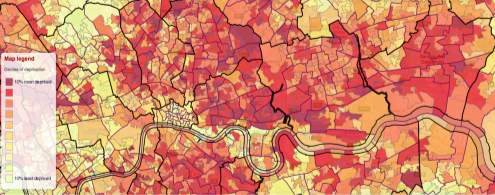
RiRiver Lea
Figure 2‑2: Map representing the Index of Multiple Deprivation within London, 2015, compared to surrounding UK (top right image) (NAVTEQ, 2015)

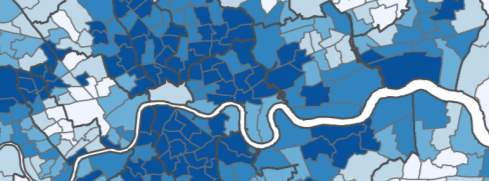
Figure 2‑3: Map representing social tenants as a proportion of all households in London, 2011 (GLA, 2015)
Comparing Figures 2-2 and 2-3 with the flood risk map in Figure 2‑4, the highest flood risk subsists particularly within the North-East London vicinity surrounding the River Lea, where boroughs such as Hackney, Enfield and Tower Hamlets correspond with the most deprived areas in Figure 2‑2 and the concentration of social housing in Figure 2‑3. This reinforces a correlation between flood risk and deprivation surrounding London rivers.
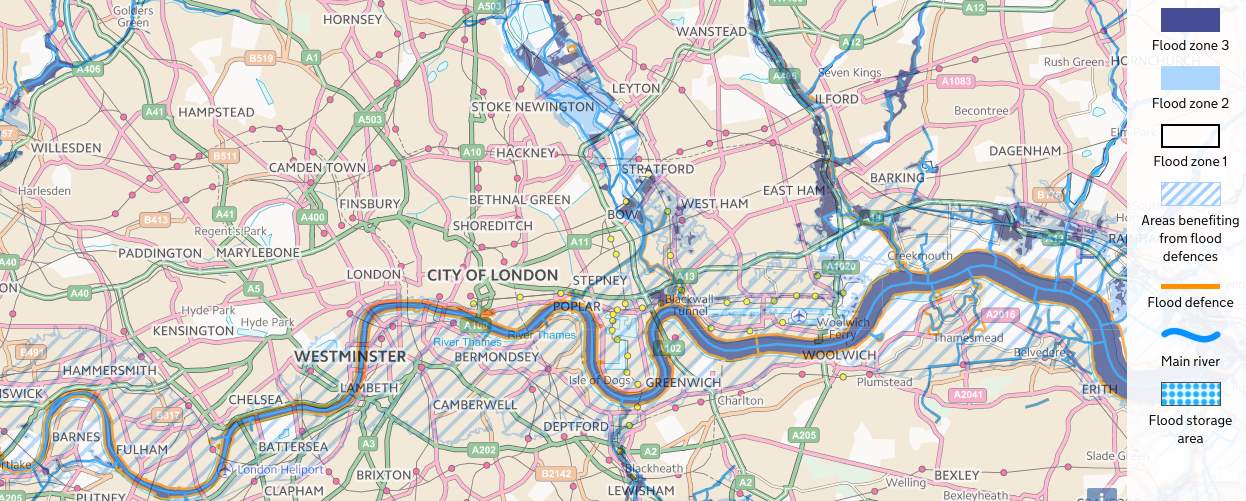
Figure 2‑4: Map representing the levels of flood risk throughout London (GOV, 2017)
2.2.1 Social Housing
Social housing offers affordable housing for low-income households and for those in need, which is generally instigated and administrated by not-for-profit organisations. These organisations fall under the governmental Department for Communities and Local Government (CLG) (Shelter England, 2017). Notably, Pitt (2008) cited by O’Neill and O’Neill (2012, p.5) outlined that those within the low and very low-income household bracket represent one-third of all UK households, where 69% are in social housing.
2.2.2 Urbanisation and Affordability
The concept of urbanisation exists twofold: the first is through the creation of roads, drains and buildings, creating impermeable surfaces in place of natural surfaces, increasing runoff by five times and reducing 24-hour water retention by 40% (Adams and Watson, 2011, cited by Barker and Coutts, 2016, p.20). The second is through the increase in migration of people and communities to densely-populated urban areas. Specifically within London, the GLA (2015) projected a population of 10 million citizens by 2030; this will increase the demand for land, property and affordable social housing. Barker and Coutts (2016) recognised that urbanisation, through the lack of available land, may result in more people located in high flood-risk areas and floodplain developments, but it may also ‘increase the risk of flooding by reducing the natural capacity of the ground to absorb water’ (Barker and Coutts, 2016, pg.18).
2.2.3 Vulnerability to Flooding
The Stern Review (2006) highlighted that those within the low-income bracket often live in high flood-risk areas, marginal lands and poor quality housing, which may be verified by the maps presented in Figures 2-2 to 2-4. The EA established the top 10% most deprived of the population were eight times more likely to reside within a floodplain, than those from the 10% least deprived within the UK (Stern, 2006). Those of a lower income will typically have less financial leverage to cope with climate change, including lack of adequate insurance cover (Stern, 2006) and sufficient flood measures in place.
2.3 Governance
Responsibility of administering matters such as UK-wide flood protection and the provision of social housing ultimately lies with the UK Government. It is their responsibility to maintain country security, welfare, economic management, as well as environmental considerations. Intervention on a local level is not overseen by the Government, but is managed by those defined in the section 2.3.1.
2.3.1 Governmental and Non-Governmental Institutions
In addition to the flood management bodies defined in section 2.1.3.2, and not-for-profit social housing organisations in section 2.2.1, the following institutions are relevant to the context of this research project, in order of responsibility:
- The Greater London Authority (GLA), relevant to city-wide planning matters such as transport infrastructure, economic considerations and policing.
- The Canal and River Trust (CaRT), responsible for the provision of mooring rights, as well as managing most canals and waterways in England and Wales, including the London Regent’s Canal.
- Local Councils (for instance, the London Borough of Hackney), administering council-wide planning matters, such as planning permission for housing and commercial developments.
- Planning consultants, urbanists and architects, commissioned for design from the above institutions.
2.4 Planning
In the context of planning for a house or boat at a local property-level, the following processes are illustrated in Figure 2‑5 and Figure 2‑6 respectively:
2.4.1 Planning on Land

Figure 2‑5: Typical planning process for constructing properties on-land
2.4.2 Planning on Water

Figure 2‑6: Typical planning process for constructing or mooring a boat on-water
2.5 Floatation and Flood-Resilient Structures
Extending on the definition of ‘Aquatecture’, Williams (2009, p.vii) defined this typology as an ‘architectural adaptation…[where] water and architectural design can unite to produce dynamic and reliable mitigation solutions’. Residents can feel ‘at one’ with the water, emphasising the leisurely nature of the environment, but may also safeguard their properties and possessions from flood risk as floatation structures rise with the water level. This section considers types of floatation and flood-resilient structures, with a predominant focus on the Floating Home.
2.5.1 Floatation and Flood-Resilient Types
Figure 2‑7 illustrates types of flood-resilient and floatation structures, which may exist in the following forms:
- The Floating Home: created and founded by the company Floating Homes Ltd., in the UK. The design of the floating base is in the form of a hollow concrete hull, such that the heavier the total weight of the structure (two-storey for instance), the deeper the hull base is constructed to suit these needs. Douglas (2013) underlined the advantage of a hollow concrete hull base is that no foundations are required; the superstructure is dependent on the buoyancy of the floating basement. It is important to note that the Floating Home typifies a flood-resistant structure.
- Amphibious House: completed in Cambridgeshire, 2015, which rests on the ground but floats up with the water level, whilst remaining anchored to a piled guidepost system. De Graaf (2012), a specialist in floating urbanisation, stated that this solution utilises significantly more material for the excavation area below the house, as well as the guidepost system.
- Elevated Building: a structure which is elevated on supporting piers, raised above the predicted flood level. One disadvantage might lie with disabled access and natural surveillance of the street (Barker and Coutts, 2016).
- Wet-Proof Resilient Buildings: a resilient building which operates via a sacrificial ground floor, should a flood event occur. It involves designing to keep the ground floor able to cope with this ingress, through intelligent materials and strategically placing possessions (Barker and Coutts, 2016).

Figure 2‑7: Google Sketchup diagram of a Floating Home, Amphibious House, elevated building and wet-proof resilient building (left to right); all are flood-designed structures (Google Sketchup, 2017)
2.5.2 History of Floatation Structures


The arrival of habitable floatation structures was made possible over 50 years ago in the Netherlands, as a measure for adapting to rising sea levels through buoyant technology; particularly where 60% of the Netherlands is below sea level (Junak, 2016). The Dutch have since developed the floatation technology into vast habitable developments, such as the floating houses of IJburg in Holland (discussed in section 2.6). Bueren et al. (2006) viewed that this case offered an accelerator for construction technology and a prototype to test the waters in this innovative approach. Presence of this technology in the UK is limited, but not absent: one of the first Floating Home prototypes was launched in Chichester, Sussex, in June 2016 (Figure 2‑8).
Figure 2‑8: View from exterior and interior of the Floating Home Chichester prototype (image by author)
2.5.3 Design and Construction of the Floating Home
After review of existing technologies, this section focuses on the design and construction of the Floating Home specifically as a floatation structure, due to an opportunity for a Floating Home contemporary case study (discussed in section 3.4.1), where collaboration between the senior director of Floating Homes Ltd. and numerous stakeholders has ensued.
2.5.3.1 Floating Home Materials
The elegance of the design owes to the hybrid technology behind the floating hull substructure, which consists of reinforced concrete or reinforced concrete with expanded polystyrene (EPS). De Graaf (2009) confirmed the addition of polystyrene in the concrete mix decreases the overall density of the foundation and enhances the structure’s buoyancy, however this approach is generally more expensive than a hollow concrete foundation. Furthermore, Junak (2016) emphasised where the reinforcement is encased in concrete, this prevents rusting and condensation collecting at the base, enhancing the virtually maintenance-free appeal of the floating technology over other technologies.
2.5.3.2 Floating Home Construction
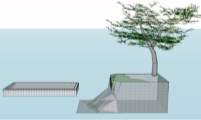
A major advantage for the construction of a Floating Home is the application of a modular system. The modular Floating Home substructure and superstructure is generally pre-fabricated, which are later brought to site, then lifted and fitted together, as demonstrated in the construction sequence in Figure 2‑9. Moon (2012) emphasised the advantage and opportunity for speed in mass-production and similarly, Goodier and Pan (2013) in ‘The Future of UK Housebuilding’ RICS report highlighted the potential of modular buildings and the positive impact on future housebuilding.
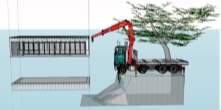

Figure 2‑9: Google Sketchup diagram of construction sequence for the Floating Home (Google Sketchup, 2017)
According to Junak (2016), the dwelling substructure takes a total of two months to construct, whereas the superstructure takes as little as two weeks. The benefits of the modular construction system are that these two components can be built simultaneously to avoid delay and large modular systems can be built at one time.
In terms of cost, the home costs in the range of £150-200,000 (Junak, 2016), which is constructed according to building regulations (BS 3632) as a permanent residential park home. Junak (2016) believed that although this cost can be compared to a normal land-based home, the benefits behind constructing the home within an area susceptible to flooding is that the land costs (and therefore mooring costs) are far less. This is due to a lack of demand for such land, resulting in cheaper total life-time costs.
2.5.3.3 Floating Home Services: Centralised or Decentralised
For smaller developments such as the Chichester Floating Home prototype, a centralised system is recommended. An encased pipe system within the concrete hull base operates via a pump (Figure 2‑10, left image) to transport water and wastewater back to the bank at which the house is moored (Junak, 2016), as well as the electricity supply. This connects to the adjacent ‘centralised’ water management system on land (Figure 2‑10, right image).
Bueren et al. (2006) highlighted the advantages of separating the IJmeer City water management system from the large centralised infrastructure system of Amsterdam, to test a new ‘decentralised’ design. A decentralised facility utilises a biogas energy source and evaporative cooling from the surrounding water: Daglio (2014) emphasised this reduces the need for mechanical ventilation and subsequent energy consumption.
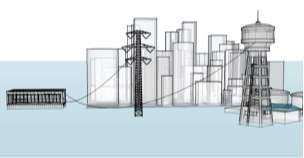
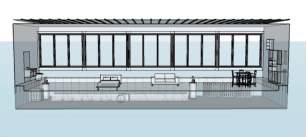
Figure 2‑10: Google Sketchup diagram of Floating Home centralised services in hull base (left), which connect to the services systems on land (right) (Google Sketchup)
2.6 Case Studies
The previous sections introduced flood-resilient and floatation structures as a means of mitigation against rising sea levels and dealing with flood occurrences. The following case studies focus predominantly on different scales of floatation structures, ranging from a single dwelling to a floating community.
2.6.1 Single Floating Dwelling: Chichester Prototype, Sussex, UK
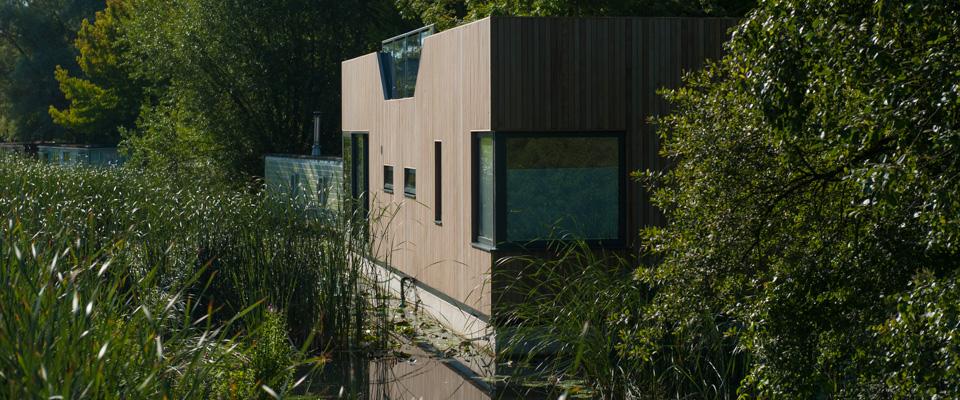
Figure 2‑11: The Floating Home prototype, Chichester, UK (Floating Homes Ltd., 2016)
Floating Homes Ltd. showcased the first Floating Home prototype within the Chichester Canal, Sussex (Figure 2‑11). BACA Architects were employed to design the prototype, which consisted of a modular superstructure, supported by a floating concrete hull foundation base. This involved construction in two stages: the foundation base was casted and formed in the Netherlands, which was then transported over to the UK, whereas the modular superstructure was prefabricated in a UK-based factory. The two were brought to and assembled on site to form the Floating Home.
The Floating Home operates via a ‘centralised’ water management system and connects to the adjacent services on land (detail discussed in section 2.5.3.4). This enables the Floating Home to operate exactly like a land-based dwelling and underlines the distinction from a typical houseboat.
The Floating Home prototype is situated on a disused canal via a residential mooring. Floating Homes Ltd. was able to obtain permission from the Chichester District Council for the home after a ten year planning process, as well as the leasehold to the residential mooring from Chichester Harbour Conservancy. Junak (2016) emphasised that these processes (illustrated in section 2.4) form the integral phases which are needed to construct any houseboat, barge, boat or Floating Home. With planning permission granted to launch the first prototype, this provided the opportunity to showcase the Floating Home as an idyllic balance between canal and land-based living. Williams (2009, p.12) highlighted ‘people have an unexplainable connection and desire to live by the water’ and Rijcken (2006, p.1) viewed living on water as an attractive way of life for ‘transportation, recreation [and] pleasing reflections’.
2.6.2 Affordable Student Housing: Copenhagen, Denmark
The construction of the ‘Urban Rigger’ was commissioned to provide affordable and innovative, sustainable accommodation for local students in Copenhagen. Designed by Bjarke Ingels Group, the structure comprises a concrete hull floating island, supporting nine shipping containers and forming twelve student housing units (Figure 2‑12). The function of the student accommodation relies upon a decentralised water system and the use of energy-sustainable methods.
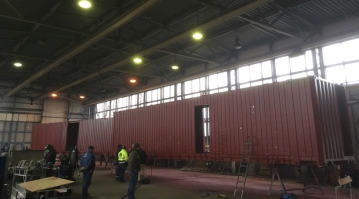

Figure 2‑12: Aerial view of Urban Rigger (left) and shipping container, pre-installation (right) (UrbanRigger.com, 2016)
The Urban Rigger is designed for an environmentally-conscious planning requirement, posing major benefits over a typical land-based dwelling. Figure 2‑13 demonstrates the use of hydro-source heating, which employs the surrounding seawater as a natural source for heat transfer, operating via a heat exchanger. This system, dissipating latent heat from the surrounding waters in summer months and retaining heat during winter months, reduces emissions by 81% compared to conventional heating systems using gas, oil or grid power (Urban Rigger, 2016). Dickhaut et al. (2011) cited by Daglio (2014, pp.150-6) emphasised that such strategies can fall under the ‘water sensitive urban design’ umbrella, which reduces the possibility for environmental impacts.
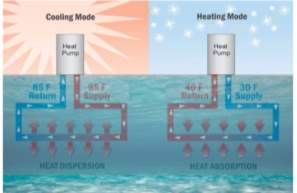
Figure 2‑13: Urban Rigger heat pump heating and cooling processes (UrbanRigger.com, 2016)
Copenhagen, Denmark, is regarded as one of the top nine most expensive cities in the world to live (Brinded, 2016). Kim Loudrup, founder of the Urban Rigger and originator of the idea for the use of floating shipping containers, sought to offer affordable student accommodation within the densely-populated city, where untapped local waterways were utilised (Urban Rigger, 2016). Planning permission was granted from Copenhagen City Hall on its first application. This demonstrated that the Urban Rigger was possible where administrative stakeholders agreed and recognised advantages associated with such a development, as well as the appropriate space for moorings (Loudrup, 2016, cited by Balslev, 2016). This context is something that could be carried through to London, another of the costliest cities in the world.
2.6.3 Floating Community: IJburg Floating Houses, IJmeer, Amsterdam
Figure 2‑14: IJburg artificial islands aerial view (left) (dRO Amsterdam, 2016) and floating houses in IJburg City (right) (Friso Spoelstra, 2013)
In 1996, the Dutch municipality launched a new land reclamation project, named IJburg, for a group of six artificial islands located on Amsterdam’s IJ Lake, IJmeer (aerial view (left) in Figure 2‑14) (Bemmelen and Steenbergen, 2011). Designers Marlies Rohmer and Floris Hund included the integration of floating houses, illustrated in Figure 2‑14 (right), to form part of the urban design, with completion in 2011. Bemmelen and Steenbergen (2011) outlined that the IJburg project was intended to tackle problems where the area is largely located below sea level and historically, has been subjected to flooding. Further expansion in population density and urbanisation within Amsterdam meant the area was highly vulnerable to extreme flooding events; IJburg was realised (De Graaf, De Giesen and De Ven, 2007, cited by Bueren et al., 2006, p.4).
Bemmelen and Steenbergen (2011) also stated that the IJburg land reclamation was thought to have environmental consequences on the surrounding ecology, where a ‘pancake method’ forming layers of consolidated sand was utilised. This process was seen to disrupt the local bird habitat and fish shoals within the lake (O’Sullivan, 2015), as well as erosion of the sea bed and pollution (De Graaf, 2012). The inclusion of floating houses helped to counteract this process of construction, where its effects are far less compared to that of the islands and does not rely on a ‘pancake method’. IJburg was able to reap the benefits of a decentralised water treatment system (Bueren et al., 2006), as discussed in section 2.5.3.4, which is fully separate from the large centralised water infrastructure on the adjacent land, as with the Urban Rigger, Copenhagen.
Huang-Lackmann and Lovett (2016) suggested that the commodity of living out on water may well be associated with a higher price tag and IJburg may have deviated from affordable housing. De Graaf (2009), after reviewing the TU Delft-OTB questionnaire results of potential buyers for floating houses in the Netherlands, realised they generally held a high education, a high income and were over the age of 25, concluding the technology as a ‘small luxury market’ (De Graaf, 2009, p.92). De Graaf (2009) also recognised the growing market demand for floating houses and that large-scale developments would eventually trend towards catering for the low and middle-class market.
The Dutch Municipality relied predominantly upon the Dienst Ruimtelijke Ordening (DRO – Department of City Planning) to pursue the IJburg development, as well as numerous public agencies in the design and planning process. In March 1997, a referendum was held and the project ensued, but was met with opposition from pressure groups due to the potential ecological impacts of the land reclamation (Scottish Government, 2010).
2.7 Summary
This Literature Review chapter has discussed the uses of flood-resilient and floatation structures as a means for adapting to the prevalent rising sea levels. As such, this research project focuses primarily on floatation structures, specifically the Floating Home. An innovative solution is needed to tackle issues related to the lack of social housing in London and awareness of property-level flood protection measures. The discussed case studies can present a case for the Floating Home suitability and viability within London specifically.
3 Methodology
3.1 Introduction
This chapter evaluates methods and techniques available for research analysis and deduces a suitable analysis tool to address the research subject. A structured framework has subsequently been applied to the collection of data, where ethics has also been considered and maintained. The research findings are then presented in chapter 4.
3.2 Research Approach
3.2.1 Qualitative Research
Broadly within data collection, should the research question warrant a descriptive response, it is regarded as qualitative data. Qualitative research can be considered a less-structured approach with more emphasis on the interviewee’s personal perspective through open-ended questions, when compared to quantitative research (Bryman, 2012). A qualitative approach can be employed by means of interviews, focus groups, observations or case studies. For the purposes of this research project, a case study was evaluated through structured and focused interviews. These methods were selected based upon the context of a real-life, contemporary case study for the Floating Home, where an interview framework provided adequate insight from all stakeholders involved in the process and sufficient access to data surrounding the case study was available.
Yin (2014) viewed a case study as an appropriate research tool if the focus of the study is a contemporary phenomenon. Once a case study is determined, numerous methods for structuring case study analyses may be employed, such as ‘chronological structures’ and ‘suspense structures’ as suggested by Yin (2014). For case study analysis, an ‘explanation building’ technique was utilised, as a hypothesis-generating process. This method employs explanations of the case study data, which reflect theoretically significant propositions and with the goal of developing ideas for further study. To reduce the threat of bias, referral to the original purpose of the inquiry has been be maintained and key informants have reviewed the case study evidence (outlined in section 3.6). Explanations from the data findings are presented in the discussion, conclusion and recommendations.
Research interviews were selected instead of written questionnaires or surveys, due to the beneficial, interpretive nature of interview questions and developing alternative concepts that may not have originally been considered. The use of interview questions also prepared interviewees for sensitive questions beforehand, due to the confidential nature of the case study. Where the interviewee did not understand, questions could be clearly explained by the researcher (Kumar, 2011). A structured interview model was also performed, based upon a predetermined set of questions but included scope to ask further questions, should the response have warranted further questioning. Gomm (2008) viewed that within loosely-structured interviews, interviewees and interviewers have more scope to turn facts into stories and deviate from the original research questions, therefore, a structured model provided guidance for the interviewees. A mixture of open-ended and closed-ending questions were also employed within the interview guide.
Once conducted, qualitative interview data can be analysed using an array of methods, including ‘linguistic analysis’ and ‘narrative analysis’, where themes may be predicted beforehand and links between the past and present take place. A ‘grounded-theory’ thematic analysis was selected on the basis of a progressive identification of concepts (subthemes) and themes, which emerged from the interview data. A framework was also created for this analysis, drawing comparisons and contrasts between different respondents, to deduce the occurrence of themes and concepts as a quantity. This qualitative data is presented in the findings in a quantitative manner, utilising a triangulation method.
Potential limitations of qualitative research may arise from ‘reflexivity’, where the researcher’s perspective unknowingly influences the interviewee’s responses in an interview scenario (Yin, 2014). Other forms of evidence were therefore relied upon, such as the Literature Review in chapter 2 and Case Studies in section 2.6.
3.2.2 Quantitative Research
Should the research question warrant a categorical response, this can be either qualitative and quantitative data (triangulation), or simply quantitative data (Kumar, 2011). As a grounded-theory approach produced qualitative data, the statistical significance was deduced quantitatively, through totalling the occurrences of specific responses or themes: this is presented as percentages within the Findings, chapter 4. Within qualitative data, over-detailed or digressing responses are sometimes encouraged as it can bring other important concepts to light, which is disregarded in quantitative analysis (Bryman, 2012). A hybrid system was therefore employed: analysing qualitative data quantitatively.
3.3 Secondary Research
A literature review was conducted prior to the primary research phase, to evaluate the existing literature surrounding flooding, governance, social housing, floatation and flood-resilient structures. The literature review has been structured via a series of themes, which were then used as a foundation to inform the interview questions. Books, peer-reviewed journals, articles and websites based upon these themes were carefully selected for their research validity, to inform the literature review. The 2016 Flood Expo at the ExCeL Centre, London, was also utilised as background investigation for existing flood measures.
Three case studies were selected to demonstrate the different scales of floatation developments: the Chichester Floating Home (a single floating dwelling), the Copenhagen Urban Rigger (affordable and floating student housing) and IJburg City (a large-scale floating community). Some primary research took place for the Chichester Floating Home prototype through informal conversations with the senior director of Floating Homes Ltd.
3.4 Primary Research
3.4.1 Primary Case Study

Figure 3‑1: Timeline graphic representing past and future steps for initiation of a Floating Home prototype in London
An opportunity arose to launch the first, single dwelling Floating Home prototype in Haggerston, within the London Borough of Hackney; this formed the basis for the primary research case study. A timeline of the case is illustrated in Figure 3‑1. The development aimed to launch a single-storey dwelling, similar to the Chichester prototype, to be moored outside the 2-4 Orsman Road property; the map in Figure 3‑2 outlines the ownership boundaries. Haggerston, East London, was selected as the location for the prototype due to a number of factors; implementation in London would provide a breakthrough for the Floating Home design, considering the planning constraints in each borough. There is associated flood risk with the Thames Estuary, as the second largest river in the UK and a basin size of 12,935 km2 (HM Government, 2016). Finally, although Hackney has undergone an extent of gentrification and represented the 11th most deprived local authority district in 2015 (Hackney.gov.uk, 2015), a high concentration of deprivation still exists, as illustrated in Figure 2-3. A flood-resistant and potentially affordable Floating Home may provide a solution to these challenges.
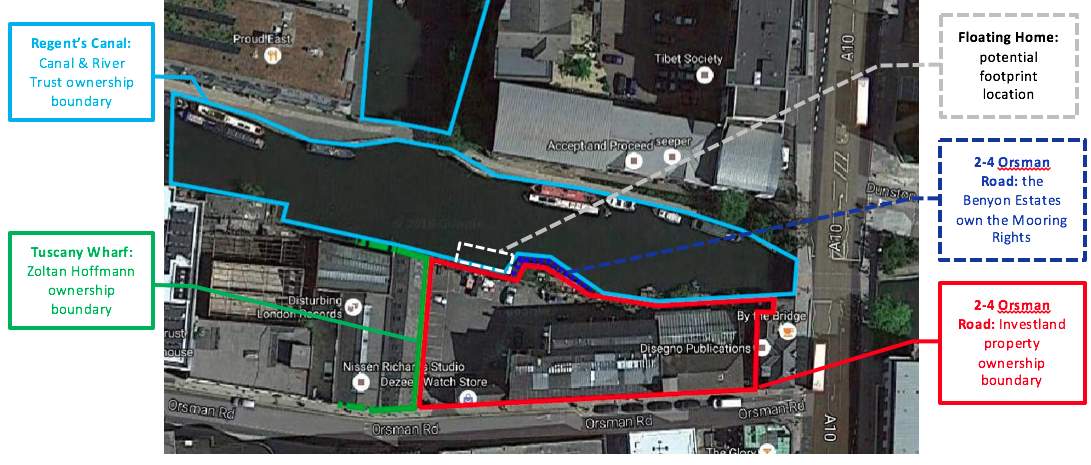
Figure 3‑2: Haggerston aerial view, annotated with surrounding landlord ownership boundaries and potential Floating Home footprint (Google Maps, 2016)
3.4.2 Research Interviews
During stakeholder selection for the case study, a technique of ‘snowball sampling’ was utilised, which involved recruiting interview participants through acquaintances of those involved in the project and those most likely to be affected by the findings of the study. The architect of the Chichester prototype was unable to grant an interview but did, however, suggest conducting research from his published book ‘Aquatecture: Buildings Designed to Live and Work with Water’, which has been incorporated into the literature review. Secondly, a London planner also denied an interview as part of the research, which may have limited the findings related to planning.
Interviews took place with six stakeholders during the primary research phase: these are presented in the Findings (chapter 4). Each interview took place face-to-face or via Skype; all were recorded using an AV recording device (all recordings are provided on the attached USB flash drive). The interviews covered a duration period between 45 minutes and 120 minutes, depending on the interviewees time constraints, and covered sections within the interview guide headed ‘General’, ‘Social Housing and Planning’, ‘Floating Homes’, ‘Case Study’ (of relevance) and a ‘Rounding Up’ section (a copy of the interview transcripts are provided on the attached USB flash drive). A separate data analysis was considered for each interview, where results were kept relative to consider the duration of the interview. Any incentivising beforehand was minimised and all interview questions, as well as a pro forma permission slip, were sent to the participant ahead of the interview (discussed in section 3.6 on Research Ethics).
3.5 Data Analysis
Grounded-theory analysis was the selected approach for analysing the interview data. The framework for the analysis is demonstrated below, as well as the devised code book for analysis of the data.
3.5.1 Analysis Framework
- As suggested by Kumar (2011), two interviews were initially utilised to test the grounded-theory technique, whereby verbatim responses were examined and category identification was used to determine the main themes that emerged from the data. Codes were then assigned to these themes. Interviews were reviewed again, to determine the sub-categories named ‘concepts’, which fell under the main themes.
- Themes and concepts underwent constant comparative analysis and refined until saturation point, where no new themes could be identified and paradigms in the data were established.
- Rules were assigned via a code book, (section 3.5.2) to aid determination of the themes, concepts and interdependencies for the rest of the data analysis.
- All coded data was recorded quantitatively in Microsoft Excel, which provided a tool for determining how frequently each theme and concept occurred within the individual interviews. This was expressed as a percentage, to demonstrate its significance.
- Possible limitations of the analysis lay with departing from the original problem question, fragmentation of data and a possible vagueness in how themes were identified. Bazeley (2013) argued to justify why and how each theme is important: this is discussed in the Findings, chapter 4.
3.5.2 Analysis Code book
- Themes were first determined from the meaning behind the respondent’s answer and which broad theme appropriately reflected their response.
- Concepts were not categorised into more than one major theme.
- If an individual theme or concept was inferred twice within the same response, this only constituted as occurring a separate time if a completely different notion or context was discussed.
- If a participant’s response was ‘I don’t know’, ‘no’, ‘there’s not’ or of the like, this would not constitute as a theme or concept, due to lack of elaboration.
- Comparisons between similar themes and concepts were employed to refine and reduce the final quantity of themes and concepts and all were validated by reviewing the interview more than once.
- Any ‘waste basket’ responses, as outlined by Kumar (2011), that could not be categorised were disregarded.
3.6 Research Ethics and Validity
Bryman (2012) highlighted moral universalism and that ethical precepts must be considered for each participant within the research, thus ethics, privacy and confidentiality were considered throughout collection of the primary data, as well as validity and reliability measures. Confidentiality was ensured by sending interview questions to participants beforehand and validity was maintained by sending transcripts to participants after the interview for checking.
Yin (2014) also suggested the use of four tests for validity in a case study analysis: ‘construct validity’, which uses multiple sources of evidence, such as interviews and direct observations, and have key informants review the researcher’s case study evidence; ‘internal validity’, involving pattern-matching and explanation building; ‘external validity’, utilising a theory in a single case study; and ‘reliability’, which follows a case study protocol and develops a database. These methods were maintained throughout the research project where appropriate.
3.7 Summary
This chapter demonstrates the appropriate use of qualitative analysis for the purposes of the primary research and justifies the use of a case study approach, explored through structured interviews, with ethics maintained during the research. Whilst a qualitative grounded-theory approach has been adopted for the interviews, this data has been analysed and represented in a quantitative manner. Secondary methods were also employed via a literature review and existing case studies. Findings from the primary research methods are discussed in the next chapter.
4 Findings
4.1 Introduction
Raw data surrounding the Haggerston Floating Home prototype case study was collated through a series of structured interviews, to determine the feasibility and viability of implementation for the Floating Home. The following data, by means of the methodology framework in chapter 3, has been analysed and categorised via a ‘grounded-theory’ approach; the findings are explored in the following sections of this chapter.
4.2 Sampling of Interviewees
To attain a variation in raw data via means of ‘snowball sampling’ (discussed in section 3.4.2), six stakeholders were selected through their involvement in the case study and covered a range of disciplines. For the purposes of confidentiality (discussed in Research Ethics, section 3.6), anonymity has been maintained and stakeholders are named the following:
- Person A: senior director of Floating Homes Ltd., based in the UK. Previously involved in the Chichester Floating Home prototype, as well as the prospective Haggerston prototype.
- Person B: director of a property development company and landlord to mooring sites and neighbouring properties of interest. Involved in the prospective Haggerston prototype only.
- Person C: social entrepreneur and project coordinator. Stakeholder in the prospective Haggerston prototype only.
- Person D: structural engineer to the Chichester Floating Home prototype only.
- Person E: neighbouring property resident at the 2-4 Orsman Road site. Stakeholder in the prospective Haggerston prototype only.
- Person F: potential Floating Home inhabitant. Involved in the prospective Haggerston prototype only.
4.3 Findings Approach
Figure 4‑1 illustrates the themes and concepts which emerged from the interview data. These results were analysed quantitatively: tables containing charts with significance percentage values, extracts from the interviewee’s responses and a discussion regarding its individual importance to the research project are all integrated within the findings. As each interview varied in length, it is important to emphasise that the percentages in Table 4-1 are expressed as a value of the individual interview data subset, not of the entire data set. An ‘inside-out and backwards approach’ has been utilised as suggested by Yin (2014), where tables of quantitative data and relevant quotations have been inserted first, then accompanied by a developed explanation. This has been used to inform the structure of the results and theoretical sensitivity, to establish paradigms or contrasts between concepts and themes.
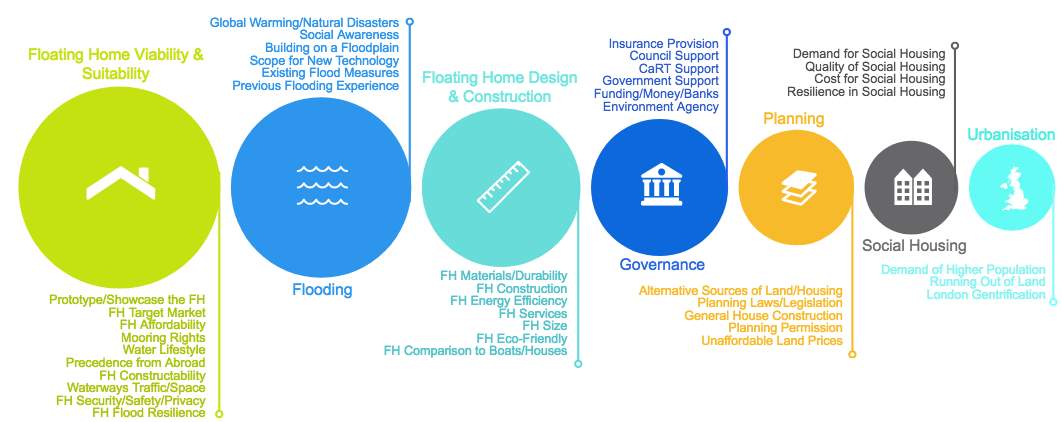
Figure 4‑1: Concepts that emerged from the data, categorised under major themes (Floating Home abbreviated FH)
4.3.1 Data Significance and Threshold
To maintain validity of the results and effectively discuss the data presented in Table 4‑1, a threshold criteria was determined to measure the significance of the presented data and define a scope for what is discussed throughout the findings:
- The following major theme sections are ordered according to their overall average percentage of occurrence across the entire data set (bottom row, Table 4‑1): the highest average being the most significant and the lowest average as the least significant.
- For any data above the theme’s average in Table 4-1, three interviewees with the most relevant and compelling data related to that theme and the research hypothesis were evaluated. This method has been employed to reflect an ‘explanation building’ technique, (outlined by Yin (2014) and stated in section 3.2.1), where data has been selected to reflect theoretically significant propositions and with the goal of developing ideas for further study.
- For the three themes with the lowest averages across the entire data set (planning, social housing and urbanisation), only two interviewees were considered. This corresponded with less concepts being allocated to that particular theme, discussed in Limitations of Results, section 4.6.
- Concepts (subthemes) are discussed according to these selected people; only their most significant concept within this theme was investigated.
- Any person’s data where their percentage was below the average for that particular theme was neglected. This was to minimise partiality or misrepresentation of data.
As a final comment of the analysis phase, it is notable that the interviewees were not against the Floating Home, as long as it is viable and suitable for implementation. Conversely, the prominence of social housing within the data suggests, even when prompted through interview questions, that this was not an area of significance for stakeholders.
4.4 Results of Data Analysis
Through the data analysis framework outlined in the Methodology, chapter 3, the following results were deduced, where the main themes that emerged from the data set are displayed in Table 4-1:
Table 4‑1: Data results across all interviews with Person A-F. Each theme has been allocated an average to determine its significance of the entire data set
| Interviewee | Floating Home Viability & Suitability | Flooding | Floating Home Design & Construction | Governance | Planning | Social Housing | Urbanisation | Total |
| Person D | 32.1% | 16.1% | 26.8% | 7.14% | 14.3% | 1.79% | 1.79% | 100% |
| Person F | 36.8% | 17.1% | 10.5% | 22.4% | 6.58% | 3.95% | 2.63% | 100% |
| Person E | 33.8% | 37.8% | 14.9% | 4.05% | 2.70% | 6.76% | 0.00% | 100% |
| Person B | 33.9% | 14.8% | 10.4% | 22.6% | 10.4% | 4.35% | 3.48% | 100% |
| Person A | 18.3% | 33.3% | 16.7% | 13.3% | 13.3% | 1.67% | 3.33% | 100% |
| Person C | 31.5% | 24.2% | 10.1% | 14.8% | 13.4% | 2.01% | 4.03% | 100% |
| Average | 31.1% | 23.9% | 14.9% | 14.0% | 10.1% | 3.42% | 2.54% |
Table 4-1 demonstrates that Floating Home viability and suitability formed the most significant theme across the entire interview data, with an average of 31.1% for each interviewee. In contrast, urbanisation represented the least significant and mentioned theme across all interviews, with the lowest average at 2.54%. The following sections are ordered according to the significance averages represented in Table 4-1.
4.4.1 Floating Home Suitability and Viability
Displayed in Table 4-1, Floating Home viability and suitability was most prominent for Person F (prospective Floating Home resident) at 36.8% and least prominent for Person A (senior director of Floating Homes Ltd.) at 18.3%.
4.4.1.1 Prototype and Showcase the Floating Home
The concept of prototyping or showcasing the Floating Home was most representative for Person F, at 27.8% of the major theme (Floating Home suitability and viability) – their data is illustrated in Table 4-2. When discussing the case study, Person F elaborated on the suitability of the Floating Home for a borough such as Hackney, which would prosper as a showcase. The accompanying statement is also displayed in Table 4-2 below:
Table 4‑2: Floating Home Suitability and Viability theme breakdown for Person F
| Major Theme Average | Data | Key Concept | Relevant Statement |
| 36.8% |
|
Prototype/Showcase the Floating Home (27.8%) | “Well I think it would be an amazing showcase. I think it [Haggerston] is a very trendy area and things are accepted a lot easier around the area…I think we have to make an example in one borough, as a case study, and then I think that people will take it a lot more seriously.” |
Person F viewed that the Floating Home would need to be exhibited as a success in Haggerston, conducive to other boroughs of London embracing this technology. Haggerston is situated in the borough of Hackney, East London, which Person F has regarded as ‘trendy’ and forward thinking: an area more accepting of new trends. Person F is also a resident and has worked within Hackney for the last ten years; their experience and knowledge of this area is extensive.
4.4.1.2 Floating Home Target Market
The Floating Home target market represented the overriding concept for the property developer, Person B, forming 28.9% of their data in Table 4-3. At the beginning of the interview, Person B viewed that the Floating Home was most suited to families; this notion was later contradicted in their interview. Person B and F were the only participants that acknowledged a health and safety risk for families with young children and therefore, a lack of suitability for this target market. Person B agreed that the Floating Home is best suited to “people that have come out of education”, the accompanying statement is displayed in Table 4-3:
Table 4‑3: Floating Home Suitability and Viability theme breakdown for Person B
| Major Theme Average | Data | Key Concept | Relevant Statement |
| 33.9% |
|
Floating Home Target Market (28.9%) | “They’ve had a start from grandparents to buy their first home and I think Floating Homes could be a possibility for first-time buyers as a group…And I would have thought that collectively, people would have a share in the boat [sic] … each one that moves on they can sell the share to another person that comes in.” |
As a developer, Person B viewed an investment potential in the Floating Home; this notion was also mirrored by Person C (social entrepreneur) who, regarding this concept, believed that the assets of the Floating Home could be generated into an income. Person C also believed in the notion of a ‘starter home’, where the Floating Home could provide ‘sustainable communities’. In creating sustainable communities: this term refers to a community that is dependent on creating and sustaining economic and environmental stability, promotes social equity and a government based upon citizen participation in planning and policy-making (CONCERN Inc., 2017). Nonetheless, Person C departed from the prospect of social housing and underlined a fitting Floating Home target market of first-time-buyers, paralleling Person B’s views.
4.4.1.3 Mooring Rights
The provision of mooring rights was generally discussed in the context of the implementation of the Floating Home and was therefore positioned under suitability and viability of the Floating Home. Throughout their interview, Person D (structural engineer) recognised that, providing mooring rights and a lease could be secured, this would enable implementation of the Floating Home on the waterways. Mooring rights formed the central concept for Person D at 32.4% of the major theme (displayed in Table 4-4). Person D viewed the legal framework behind mooring rights was the most critical obstacle for the Floating Home implementation:
Table 4‑4: Floating Home Suitability and Viability theme breakdown for Person D
| Major Theme Average | Data | Key Concept | Relevant Statement |
| 32.1% |  |
Provision of Mooring Rights (32.4%) | “[On moorings] …most of the time, they’re all on short-term leases, so that will restrict how much money you are willing to pay for it [the Floating Home] … Unless people believe they’ve got a reasonable length of time, they are unlikely to invest in a reasonable home.” |
Whilst Person B and C viewed the Floating Home as a potential investment venture (as discussed in section 4.4.1.2), Person D highlighted that this is not viable unless an appropriate length of time is secured on a mooring and it can be attained at an affordable price.
4.5 Flooding
With an average of 23.9% across the entire data set (displayed in Table 4-1), flooding formed the second most significant theme within the interview data. The theme was most prominent for Person E (neighbouring land-based property resident) at 37.8%, which also formed the largest percentage in Table 4-1, and least prominent for Person B (property developer) at 14.8%.
4.5.1.1 Global Warming and Natural Disasters
Global warming and natural disasters represented the principal concept for Person E, as displayed in Table 4-5. Person E’s observation is presented in Table 4-5:
Table 4‑5: Flooding theme breakdown for Person E
| Major Theme Average | Data | Key Concept | Relevant Statement |
| 37.8% |
|
Global Warming/Natural Disasters (25.0%) | “I mean in Japan, because we had that tsunami a few years ago and that kind of reignited the interest in this [flood resilience] …and so in the last 300 years or so people forgot about it [flood risk] …and that’s why that disaster was actually much bigger than it could have been, you know.” |
Within this statement, Person E paralleled the lack of preparation for natural disasters, such as tsunamis, in his home country, Japan, with forgetting flood events in the UK. Person E also believed this explained and justified settlements in risk-prone places, such as next to the River Thames. If a flood event had not occurred within a certain period of time, it was not within people’s minds, emphasising a lack of social awareness.
4.5.1.2 Building on a Floodplain
Similarly with Person E, flooding denoted the most significant major theme for Person A (senior director of Floating Homes Ltd.), at 33.3% of their interview data. The concept of building on a floodplain formed the overriding issue within this theme, at 29.7% (displayed in Table 4-6). Person A asserted uninformed construction within floodplains; their view is outlined in Table 4-6:
Table 4‑6: Flooding theme breakdown for Person A
| Major Theme Average | Data | Key Concept | Relevant Statement |
| 33.3% |  |
Building on a Floodplain (29.7%) | “…in the planning process…if it looks like in the next 60 years there’s a possibility of flooding then all those houses should have flood resilience built into them and at the present nothing is being done about it. A lot of places have been built in floodplains…Everybody is turning a blind eye to it.” |
Person A reiterated that flood resilience must be an integrated strategy within housing design, in order to reduce the risk of flood damage. At present, Person A believed insufficient awareness and accountability is preventing protection reinforcement. Person A subsequently indicated the limitations of the UK’s current planning processes and legislation in implementing flood resilience within properties; planning processes are discussed further within Planning, section 4.5.4.
4.5.1.3 Scope for New Technology
Whilst Person A recognised a weakness within current property-level flood-proof measures, Person C (social entrepreneur) viewed an opportunity associated with existing flood resilience in offering scope for new technology, which formed their focal concept, as 40.9% of the theme flooding. Their assessment of this concept is displayed in Table 4-7:
Table 4‑7: Flooding theme breakdown for Person C
| Major Theme Average | Data | Key Concept | Relevant Statement |
| 24.2% |
|
Scope for New Technology (40.9%) | “…if people are prepared to think bold and think differently. You know, I think whether it’s [Person A] and his Floating Homes, BACA [Homes] doing the home that rises with the flood water, I think innovation is out there…People are pretty innovative.” |
Person C acknowledged that innovation was the key to harness the water for its opportunities and ultimately, reduce the risk of flood damage. Person C also highlighted the Amphibious House, designed by BACA Homes (discussed in section 2.5.1), as an example of utilising an innovative flood-resistant measure, by way of the can-float technology.
4.5.2 Floating Home Design and Construction
Floating Home design and construction produced an average of 14.9% across the entire data set, (displayed in Table 4-1), which formed the third most significant theme within the interview data. This theme was most prominent for Person D (structural engineer) at 26.8% and least prominent for Person C (social entrepreneur) at 10.1%.
4.5.2.1 Floating Home Construction
Floating Home construction exemplified the dominating concept in Person D’s data set, at 50% of the theme Floating Home design and construction (illustrated in Table 4-8). The prominence of this concept for the structural engineer is foreseeable, due to their role in the Chichester Floating Home project and the design of the superstructure. They viewed the construction was somewhat challenging, which is demonstrated in Table 4-8:
Table 4‑8: Floating Home Design and Construction theme breakdown for Person D
| Major Theme Average | Data | Key Concept | Relevant Statement |
| 26.8% |
|
Floating Home Construction (50.0%) | “Lifting it [was the main challenge]. The whole thing was designed to be built off-site and then lifted, and then taken to site and then lifted onto the hull, which is not the best way of doing it, but I think in this case it was the only way it could be done.” |
Although the construction of the Floating Home unit was challenging, Person D did, on the other hand, maintain that the structural design was not technically difficult. Whilst balancing the weight and contents of the structure played an important role in the design of the buoyancy, Person D later agreed that their structural design was not much different to a land-based dwelling.
4.5.2.2 Floating Home Materials / Durability
Durability and materials of the Floating Home formed the overriding concept for Person A (senior director of Floating Homes Ltd.), at 40.0% of their data (illustrated in Table 4-9). Similarly with Person D, Person A paralleled the Floating Home with a ‘normal’ land-based dwelling, in terms of cost related to materials for the superstructure, stated in Table 4-9:
Table 4‑9: Floating Home Design and Construction theme breakdown for Person A
| Major Theme Average | Data | Key Concept | Relevant Statement |
| 16.7% |
|
Floating Home Materials/Durability (40.0%) | “The Floating Home is probably going to be more costly because of the base that it’s on. But it depends on the area that it’s built in. If it’s a very gravelly area and you need to pile a house, that can be more expensive…But generally, the houses themselves are actually the same costs.” |
Person A verified that the cost comparison of the Floating Home with a land-based house is heavily dependent on the substructure and base material, which may be constructed using the more advanced and expensive EPS or Flexbase, in place of a cheaper concrete hull (discussed in section 2.5.3.2). Person A understood that unstable soil conditions on land may require costly piling machinery, materials and on-site labour for installation of a suitable foundation.
4.5.2.3 Floating Home Comparison to Boats and Houses
Comparing Floating Homes to land-based houses and houseboats represented the central concept for Person E (neighbouring land-based property resident) at 35.7 % (demonstrated in Table 4-10), of theme Floating Home design and construction. Person E viewed that, compared to a land-based dwelling, the living experience would be no different, but compared to a boat, their view is outlined in Table 4-10:
Table 4‑10: Floating Home Design and Construction theme breakdown for Person E
| Major Theme Average | Data | Key Concept | Relevant Statement |
| 14.9% |
|
Floating Home Comparison to Boats/Houses (35.7%) | “…unless you have a really big one [boat]…these ones are not so big, so yeah, it [the Floating Home] will be much more comfortable. So it’s probably comparable to these bigger ships that people live in in Chelsea Harbour and stuff, that’s quite nice, it would be a similar experience to that.” |
Person E asserted that the size of the Floating Home will contribute to its overall comfortability, when compared to a houseboat (which are generally narrow boats situated on the neighbouring Regent’s Canal). Person E suggested that to attain a more luxurious living experience on a houseboat specifically, this would require a larger vessel, which would generally reside in more expensive areas, such as the Chelsea Harbour in London.
4.5.3 Governance
The theme of governance produced an average of 14.0% across the entire data set, displayed in Table 4-1, which formed the fourth most prominent theme within the interview data. The theme was most prominent for Person B (property developer) at 22.6%, and least prominent for Person E (neighbouring land-based property resident) at 4.05%.
4.5.3.1 Support from the Canal and River Trust (CaRT)
Person B viewed that the contribution of governance was attributable to support from the Canal and River Trust (CaRT), forming 56.3% (presented in Table 4-11) of the theme data. Person B indicated that to implement the Floating Home, CaRT may want to retain space on the canals or would require high mooring charges. Conversely, with regards to endorsement, the developer also highlighted a lack of interest on all fronts, including CaRT. Their statement is shown in Table 4-11:
Table 4‑11: Governance theme breakdown for Person B
| Major Theme Average | Data | Key Concept | Relevant Statement |
| 22.6% |
|
CaRT Support (56.3%) | “… there’s no one to talk to, there’s no one out there who British Waterways [CaRT], government, council; they’re not interested. There’s no book, or there’s no access to any documents on what the policies are…It really is amongst deaf ears, on every side.” |
Through his experience in property development, Person B maintained that the challenge lay with gaining backing and cooperation from all governmental parties, as implementation of such a project would require total and complete endorsement.
4.5.3.2 Support from the Council
On the theme of governance, support from the council presented the most significant concept for Person F (prospective Floating Home resident), as 36.4% of their data related to governance (illustrated in Table 4-12). Person F’s statement is presented in Table 4-12:
Table 4‑12: Governance theme breakdown for Person F
| Major Theme Average | Data | Key Concept | Relevant Statement |
| 22.4% |
|
Council Support (36.4%) | “…I think each council is an island and I think there should be some more joined up thinking. It depends which council you speak to doesn’t it.” |
Similar to Person B, Person F confirmed that recognition, attention and acknowledgement for an innovation, such as the Floating Home, remains a core issue within the theme of governance. Notably, Person F suggested that should implementation of a Floating Home be ‘easier’ within one council, this may not necessarily be true for another council. An evident separation and lack of unification between governmental bodies was further stressed by Person F later in the interview.
4.5.3.3 Support from the Government
Support from the Government, on a macro-level, was the most overriding concept for Person C (social entrepreneur), with 35.7% of the theme governance (displayed in Table 4-13). Person C acknowledged that complacency is perhaps the issue with government endorsement; their view is provided in Table 4-13:
Table 4‑13: Governance theme breakdown for Person C
| Major Theme Average | Data | Key Concept | Relevant Statement |
| 14.8% |
|
Government Support (35.7%) | “…I think it’s just with the policy makers…and those that set the policy for the use of the water have got to get their head around this and embrace it and [Person A] is a pioneer, he is challenging people…I think it’s getting public and policy decision makers’ mind-set and attitudes…That I think is the biggest problem at the moment, it’s ‘Oh God this is different’ and that they’ll put up barriers because they don’t understand it.” |
It must be noted that although policy-makers may also refer to local institutions and governmental bodies, Person C in this instance was referring to a macro-level governance, accordingly the statement was aligned with this particular concept. Person C asserted that an unyielding and inflexible government prevented improvement and innovation in flood resilience and would prevent measures such as the Floating Home; the Government are not open to it and the public may not understand it.
4.5.4 Planning
The fifth most significant theme across the entire data set was planning, which produced an average of 10.1% in Table 4-1. The theme was most prominent for Person D (structural engineer) at 14.3% and least prominent for Person E (neighbouring land-based property resident) at 2.70%.
4.5.4.1 Planning Laws and Legislation
Planning laws and legislation formed one of the central concept for Person A (senior director of Floating Homes Ltd.), with 35.7% of the theme planning (data shown in Table 4-14). On planning laws, Person A’s judgement is displayed in Table 4-14:
Table 4‑14: Planning theme breakdown for Person A
| Major Theme Average | Data | Key Concept | Relevant Statement |
| 13.3% |
|
Planning Laws/Legislation (35.7%) | “The type of Floating Homes that we’re talking about, there are so few around at the moment. There is no planning policy currently in place, I believe.” |
In the instance of Person A’s data, where two concepts were most significant at 35.7%, the apposite concept was selected for discussion by the researcher in the appropriate context. Through experience in the construction of the Chichester Floating Home prototype, Person A highlighted that no current laws or policies are in place to cater for such a technology. Person A also mentioned that planning permission took over ten years for the Chichester project. This statement also parallels with the view of Person B (property developer) in Table 4-11, and highlighted a lack of guidelines surrounding the new technology.
4.5.4.2 Planning Permission
The concept of planning permission was most prominent in the dataset of Person B, as property developer and landlord, someone familiar with the constraints of planning processes. This concept represented 60% of their data related to planning (illustrated in Table 4-15). Person B emphasised that planning permission was an issue for social housing construction already – their view is presented in Table 4-15:
Table 4‑15: Planning theme breakdown for Person B
| Major Theme Average | Data | Key Concept | Relevant Statement |
| 10.4% |
|
Planning Permission (60.0%) | “On social housing…the quality of the build and the timing and to get the quarter of a million houses that’s needed every year is actually impossible to build. A couple of reasons, one, the land prices, especially in London are unaffordable for developers, secondly, planning permission is just so slow with local authorities…” |
Person B confirmed that an apparent lack of social housing is attributable to a stringent and drawn-out planning process which needed major simplification. The current planning process slows the delivery of the necessary social housing developments, as well as the quality to meet a high demand.
4.5.5 Social Housing
Social housing produced an average of 3.42% across the entire data set, as demonstrated in Table 4-1, forming the second least significant theme within the interview data. The theme of social housing was most prominent within Person E’s data (neighbouring land-based property resident) at 6.76% and least prominent for Person A (senior director of Floating Homes Ltd.) at 1.67%. Looking at the data in its entirety, it can be deduced that the theme of social housing was not an area of significance for the stakeholder interviewees.
4.5.5.1 Demand for Social Housing
The concept of the demand for social housing was most representative of Person E’s data, at 50% of the major theme (displayed in Table 4-16). On social housing, their view is outlined below:
Table 4‑16: Social Housing theme breakdown for Person E
| Major Theme Average | Data | Key Concept | Relevant Statement |
| 6.76% |
|
Demand for Social Housing (50.0%) | “But in the UK, we are not convinced the Government are doing enough to provide for social housing…for low-income people on land, so I think people want to see them sort this out first, then move onto water…” |
Person E underlined that the Government are not doing enough to meet the demand for social housing on land. Person E also suggested that the Government are permitting private housing in place of social housing and that, until the issue of social housing is solved on land, building on water cannot yet be considered. If “someone has to move to water and not to land because someone sold it to rich people, then it doesn’t sound very good…”
A potential solution to urban gentrification within social housing areas was suggested by Person B (property developer), where the demand for social housing also formed most prominent concept of their data at 60% (shown in Table 4-17):
Table 4‑17: Social Housing theme breakdown for Person B
| Major Theme Average | Data | Key Concept | Relevant Statement |
| 4.35% |
|
Demand for Social Housing (60.0%) | “Within London, the only way to get social housing to the numbers that the Government need to, would be to take buildings which they’ve taken at the moment which is under PD Rights, which is commercial buildings…” |
Person B proposed converting buildings under Permitted Development Rights (PD Rights), to meet the demand for social housing. These rights are the ability to commence building works on a sight, which may not require planning permission. A discussion of PD Rights is presented in chapter 5.
4.5.6 Urbanisation
Urbanisation represented the least significant theme across the entire data set, with an average of 2.54% (as shown in Table 4-1). The theme of urbanisation was most prominent for Person C (social entrepreneur) at 4.03% and least prominent for Person E (neighbouring land-based property resident) at 0.00%.
4.5.6.1 Gentrification within London
The concept of London gentrification was discussed mostly within Person C’s interview, at 66.7% of the theme urbanisation (presented in Table 4-18). The social entrepreneur viewed a lack of social sustainability within London; this view is set out in Table 4-18:
Table 4‑18: Urbanisation theme breakdown for Person C
| Major Theme Average | Data | Key Concept | Relevant Statement |
| 4.03% | 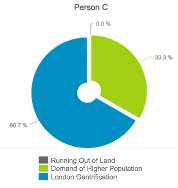 |
London Gentrification (66.7%) | “…and the other challenge ultimately, the UK is becoming so London, South-East-centric, that this is where people gravitate because there’s work …we have got to get that redistribution of industry, of business. So, otherwise it becomes very very difficult to become sustainable. Or to sustain London…” |
Person C paralleled the widespread urbanisation in London with a concentration of wealth in the capital. Person C also believed in the notion of “developing sustainable communities” (highlighted in section 4.4.1.2), however, where more people are gravitating towards London because of employment opportunities, equal opportunity diminishes.
4.5.6.2 Running out of Land
On urbanisation, running out of land represented 66.7% of the data from Person B (property developer) (presented in Table 4-19). As discussed in section 4.5.1.3, Person B also believed that a solution can be found with new technology. Their view is presented in Table 4-19:
Table 4‑19: Urbanisation theme breakdown for Person B
| Major Theme Average | Data | Key Concept | Relevant Statement |
| 3.48% |
|
Running out of Land (66.7%) | “With London, there’s not enough land, full stop, to do enough developments so there’s always going to be a problem with floodplain areas to do a development so how to get around it needs new technology.” |
Person B emphasised that construction on floodplains continues, where land is sometimes cheaper or the only option with the prevailing urbanisation of London. The developer viewed that an innovation may be the only way to tackle the issue of running out of land.
4.6 Limitations of Results
- Some concepts crossed-over into more than one theme. Even so, concepts were categorised into only one theme, according to the context in which they were discussed most.
- Some statements were not directly linked to the concept in which they were categorised, but the concept to which they were allocated was the most relevant and representative.
- A limitation was associated with selecting participants’ data according to the researcher’s observations. This method may have brought about ‘reflexivity’ as described by Yin (2014) in section 3.2.1. Scope for reflexivity was minimised through the use of an ‘explanation building’ case study analysis technique: referral to the original purpose of the inquiry was maintained and key informants reviewed the case study evidence (also discussed in section 3.2.1).
- A limitation was also possible where any participant’s data below the theme’s average was neglected. Interviewees may have made critical and meaningful points within their interview: the data selection may have led to the exclusion of critical and telling statements.
- Some themes were more dominant within the data because they had more concepts allocated to them. Nevertheless, this was unavoidable as concepts were allocated to the theme dependent on the context in which they were discussed. As concepts could not be included under more than one theme, this meant some themes were unbalanced.
- Some concepts amounted to the same percentage within a single theme. In this instance, it was up to the researcher to appropriately select which concept to discuss in the results.
4.7 Summary
Through completion of the data analysis phase by analysing qualitative data quantitatively and presenting the findings in a systematic framework, this enabled the most significant and telling data to be presented from the case study interviews. The experiment captured that Floating Home viability and suitability formed the central theme of the primary research. On the other hand, it was identified that urbanisation was not considered an important factor amongst the interviewees. The presented concepts and themes have been compared and juxtaposed against the secondary research, where paradigms in the research are evaluated in the Discussion (chapter 5).
5 Discussion
Chapter 4 presented the results from six qualitative interviews, which were accompanied by quantitative data as a significance measure of each theme and concept. As emphasised in section 3.2.1, reflexivity is minimised in the following discussion, where paradigms are deduced between the primary research (interview concepts) and the secondary research (literature review and case studies). Established patterns are then evaluated and related back to the research topic: implementing the Floating Home as a holistic flood-resistant strategy, with the prospect of a social housing development. Any concepts that cannot be paralleled with the existing literature are partially discussed or otherwise, neglected.
5.1 Suitability and Viability of the Floating Home
The primary research identified that suitability and viability of the Floating Home formed the most prominent theme surrounding the Haggerston case study, with an average weighting of 31.1% over the interviews. The data offers indisputable evidence for showcasing a Floating Home prototype, which may encourage widespread acceptance and recognition. This concept was acknowledged by all interviewees and was particularly substantial for Person F (prospective Floating Home resident) at 27.8%. Person F’s results revealed that a ‘trendy’ area, such as Hackney, would exemplify a suitable location for a prototype, with the view to extending into more boroughs at a later stage. These results are broadly consistent with the research of Bueren et al. (2006) (section 2.5.2), where the floating technology was thought to offer a prototype to ‘test the waters’ and promote innovation in the case of IJburg, seeing that at the time, no vast floating developments were yet present in the Netherlands. In this way, the success of one prototype in Haggerston can offer the vision for another Floating Home endeavour. That said, this concept simply scratches the surface of implementing the Floating Home, which is not possible without further investigation of other concepts.
Unexpectedly, the interview data described for the first time that the floating technology may be suited to a target audience of first-time buyers and those that have completed higher education, which was proposed by both Person B (property developer) and C (social entrepreneur). The analysis revealed that the concept of Floating Home affordability was predominantly considered by Person C at 22%, which may be expected from a social entrepreneur. This concept largely coincided with the concept of the Floating Home target market, which was predominantly considered by Person B at 28.9%. Notably, De Graaf (2009) reported that TU-Delft OTB studied the potential buyers of floating houses in IJburg (discussed in section 2.6.3); it was reported the technology was suited to those with a high income, a high level of education and with an age between 25-50 years old. Furthermore, Holligan (2014) stated that an IJburg floating house starts at the equivalent of £310,000, which is comparable to the average house price in Amsterdam (on-land) and as such, does not offer affordable housing. Tom van Namen, a developer behind IJburg, highlighted that this price reflects the large floor space the buyer receives, compared to a small apartment on-land for the same price (Holligan, 2014). Nonetheless, the Floating Home is placed at risk of being interpreted as a niche and luxury market; less suited to those within a low-income bracket. The interview data is therefore consistent with the notion of individuals from a higher education as a target market, highlighted in the TU-Delft OTB study. Conversely, shortcomings could be associated with the TU-Delft OTB study, which took place in 2008, and may exemplify an outdated source of data. De Graaf (2009) also highlighted that this type of technology could cater for low-income individuals, if it was able to trend towards a large-scale development, which is exactly what IJburg typifies. The Danish Architecture Centre (2017) specified that IJburg is currently undergoing further expansion, which aims to offer 30% privately owned housing, 30% middle income housing and 30% affordable housing for rental, emphasising that whilst affordable housing is absent in IJburg, affordable housing will be integrated at a later stage.
Arguably, implementation of the Floating Home is not viable should mooring rights not be granted. On the provision of mooring rights, Person D (structural engineer) held the highest percentage of data; at 32.4% related to this concept. Person D believed unless an appropriate length of time can be secured on a mooring, implementing the Floating Home may not be viable. These findings concur with the Chichester Floating Home case study (section 2.6.1), which underlined that implementation was possible where mooring rights were granted by the Chichester Harbour Conservancy (in the case of London, mooring rights would be granted by CaRT). Junak (2016) believed the provision of mooring rights formed one of the integral phases to implementing the Chichester Floating Home. It must be noted that planning permission must not be neglected within the conceptual and developed design phases of the project, which is discussed in section 5.5. If mooring rights are not attainable at the relevant location, the Floating Home cannot permanently reside attached to the adjacent land. Consequently, it may be considered that the provision of mooring rights is fundamental to the implementation of the Floating Home.
5.2 Flooding
Whilst flood-proof measures are necessary to protect the homeowner’s assets and possessions from water ingress, a lack of awareness surrounding responsibility of implementing flood measures and property flood risk represents an issue. Approximately one third (33.3%) of data related to flooding was associated with the concept of social awareness in Person A’s results. The senior director of Floating Homes Ltd. argued that insufficient measures were in place to prevent continual development on floodplain areas: this was accountable to a lack of social awareness related to protection and absence of integrated flood resilience in planning processes. In section 2.1.2.2, Borrows (2007) indicated that whilst organisations such as the Environment Agency and local authorities might advise or promote PLP, it is entirely voluntary and up to the homeowner’s discretion to implement (it can be noted that Person A was not knowledgeable with this). Coupled with a low demand for PLP devices, as emphasised by HM Government (2016) in section 2.1.2.3, both the primary and secondary research confirm a prevalent lack of knowledge surrounding responsibility for flood resilience, particularly where the homeowner is concerned. This may only be counteracted through more encouragement of flood risk assessments and implementing PLP, or another option: a new technology.
The existing flood-resistant and resilient technologies market may be viewed by some as stagnant and lacking. The concept of scope for new technology was most substantial in Person C’s results, at 40.9% of their data related to flooding. The social entrepreneur stressed a gap in the flood resilience market; where pioneers were necessitated to design, and offer innovative flood-resistant technologies. Discussed in section 2.1.3, Bosher et al. (2007) proposed initiatives for resilient and sustainable designs and called on designers to encourage a new mode of thinking. Similarly, the ICE (2009), discussed in section 1.1, called on the Government for more innovative long-term strategies in flood mitigation. Interestingly, section 1.1 also outlined that HM Government (2016) have dedicated a budget of £700 million towards flood defence and resilience up until 2021. The Floating Home may lend itself well to this allocated budget and may offer a holistic, clear-cut flood protective solution for the homeowner in place of a typical house (and would still require PLP which already remains in low demand). Although, the Floating Home may not offer an entirely cost-effective solution. As specified in section 2.5.3.2, the total cost of the Floating Home can range between £150-200,000. For a self-built land-based bungalow within central London (and with similar superstructure features), the build would cost virtually the same as the Floating Home (Build It, 2017). The real cost benefit lies with the substructure; Person A and D both claimed that the design of the Floating Home superstructure is no different to a land-based dwelling. Adjacent to the Thames Estuary, London subsists predominantly on London clay, where the underlying soil is susceptible to volumetric changes. Such soil conditions may require particular attention to the structural foundations and in the instance of piling, could produce larger material and construction costs, as well as additional on-site labour time. Person A highlighted that the Floating Home would then represent a cost-effective construction solution over a normal land-based dwelling. Whilst this may present an instance where the Floating Home is suitable for London, this notion must be interpreted with caution, whilst no available literature could support this idea.
5.3 Floating Home Design and Construction
Pre-fabrication of the Floating Home may offer another instance of convenience and cost-effectiveness. The concept of Floating Home construction constituted 50% of Person D’s data related to the theme of Floating Home design and construction; this was arguably foreseeable, where Person D acted as structural engineer to the Floating Home Chichester prototype. In section 2.5.3.2, Moon (2012) maintained that speed of construction is possible where the floatation unit can be prefabricated, brought to and constructed on-site. Goodier and Pan (2013) also upheld the positive impact associated with prefabrication in construction. In contrast, the findings from Person D’s interview slightly refute from this notion presented in the literature review. Person D recounted the challenge of constructing the Chichester prototype, where the pre-fabricated substructure and superstructure were lifted into place (demonstrated in Figure 2-9) and was perhaps not the most efficient method. Seeing that the findings present a first-hand observation from the structural engineer of the Chichester prototype, explicit advantages behind pre-fabrication cannot be ascertained. Person D did, however, confirm that pre-fabricating and lifting the units into place was the only way construction could ensue. Where pre-fabrication is successful, the Floating Home can be made an intelligent solution, even more so compared to a land-based house which requires piling, as well as PLP.
The Case Studies in section 2.6 demonstrated that utilising a centralised (the case of the Chichester prototype) or decentralised (the floating houses of IJburg) services system may have presented an advantageous opportunity over normal land-based houses and houseboats. Findings from the primary research interviews were not synonymous with this idea, where services were marginally mentioned by the participants.
5.4 Governance
Provision from the relevant governmental and institutional bodies is also fundamental to instigating the Floating Home design. Implementation of a prototype may only ensue through, as hypothesised by Person C (social entrepreneur) and F (prospective Floating Home resident), unified and joined up thinking from multiple governmental bodies. Section 2.3.1 outlined that multiple institutional stakeholders are involved with implementing and maintaining flood protective measures; these include planning consultants, the local council, CaRT and in some cases, macro-scale institutions such as the GLA and Government. Notably, the case studies presented in section 2.6 suggest that implementation of these projects could not be realised without consent from governmental bodies relative to the size of the project (i.e. the Chichester prototype through the Chichester District Council, the Urban Rigger through Copenhagen City Hall and finally, IJburg through the Department of City Planning, also where a referendum was held). Whilst it may seem reasonable to parallel implementation in London with the Chichester prototype, it becomes more intricate in the setting of the UK’s capital due to the sheer number of governmental stakeholders. Therefore, the specific institution (or institutions) which may assist in launching a Floating Home prototype in London cannot be determined through the research and this subsequently forms one of the recommendations in section 6.3.
5.5 Planning
As discussed, Junak (2016) believed that alongside the provision of mooring rights, obtaining planning permission also formed one of the integral phases to implementing the Chichester Floating Home. The concept of planning permission was most representative in the data of Person B; at 60% of the theme of planning. This denoted an expected result of a property developer, who is very much familiar with planning processes in London. Person B stressed that planning in London is time-consuming and often prolonged. In the case of the Chichester prototype (section 2.6.1), the planning process took a total of ten years before permission was granted. This is attributable to the planning behind a project such as the Floating Home, which may require a complicated and timely two-fold process; planning on land and planning on water, outlined in sections 2.4.1 and 2.4.2 respectively, as well as lack of available planning standards and procedures in place for the Floating Home, emphasised by Person B in section 4.5.3 and Person A in 4.5.4. Even more so with social housing, Person B also stated that planning slows the delivery of the necessary social housing developments. A legal framework needs to be greatly simplified and made much quicker before planning for the Floating Home may be considered, regardless of the prospect for social housing.
5.6 Social Housing
The primary research intended to evaluate an unexplored hypothesis of the Floating Home as a viable social housing option, where none of the case studies in section 2.6 exemplified a floating social housing development. Conversely, social housing represented the second least significant theme within the primary research phase, with an average of 3.42%, presented in Table 4-1. It can be deduced from the data that the original hypothesis of offering social housing is not so robust, where it is more suited to first-time buyers. What did become apparent in the limited data, was that the existing system of social housing provision is already a prevalent issue. Multiple interviewees recognised that the quantity and delivery of social housing developments was insufficient and slow, particularly Person E (neighbouring land-based property resident) with 50% of their data related to the demand for social housing. A prominent point was also put forward by Person B (property developer): to resolve the slow planning process behind the delivery of social housing, properties under PD Rights could be released and converted into such developments. PD Rights allows for the conversion of non-domestic properties, such as offices, barns or agricultural buildings, into residential homes. On the contrary, in the London Councils Briefing (2015) on PD Rights, it was stated that PD Rights offers an expeditious application process, only to consider contamination or flood risks associated with the property, where notably, authorities cannot seek affordable housing contributions. This revokes the possibility of quicker social housing delivery under PD Rights and contradicts the original suggestion made by Person B. Even more so, the Floating Home may not justify a swifter planning process for social housing. The existing system of social housing is also an issue where Figures 2-2 to 2-4 suggest social housing is being constructed in areas of high flood risk, particularly surrounding the River Lea. Continual development in floodplains remains unclear and justifies further research (suggested in section 6.3).
5.7 Urbanisation
This study reinforces that urbanisation is a prevalent issue in London and was acknowledged by all interviewees. The cases of the Urban Rigger and the floating houses of IJburg (section 2.6) were intended to confront issues of urbanisation on land. Whilst the Floating Home may have sought influence from such cases, no interviewees directly linked or argued the Floating Home as a rationale for urbanisation. This verdict also remains limited where urbanisation formed the least significant theme, with an average of 2.54% in Table 4-1. Nevertheless, the researcher believes London urbanisation and the subsequent scarcity of land could argue a compelling case for implementation of the Floating Home and forms a recommendation in section 6.3.
5.8 Summary
This chapter has discussed and brought to light the principal implications associated with the research subject. The findings suggest that the Floating Home can offer an innovative flood mitigation measure, in light of flood risk in London and the associated lack of awareness surrounding property-level resistance and resilience technologies. The ‘trendy’ vicinity of Hackney is best suited to implementation of an innovative technology, possibly not because it is an area of deprivation. This notion counteracts the affordability of the Floating Home, which may be suited to first time buyers out of higher education. The research indicates an issue of implementing social housing lies with an already slow planning process, and where planning presented a painstakingly slow process for the Chichester case, this suggests the planning process for the London prototype may pose a greater issue to the realisation of implementing a Floating Home in London.
6 Conclusion
This study set out to assess whether the Floating Home may be upheld as a viable flood-resistant housing strategy within London, UK, with the prospect of offering an affordable social housing solution. Literature surrounding the context of flooding and social deprivation within London, UK, has been evaluated and formed part of the secondary research phase. Additionally, the literature review investigated current governmental and planning procedures in London, to provide a political and legislative backdrop for implementation of the Floating Home. The design, construction and technology behind the Floating Home and floatation structures has also been presented, alongside three case studies on multiple scales, constituting part of the secondary research phase. The case studies ranged from a single floating dwelling to a floating student housing development and, finally, to a floating community. These formed integral research examples of existing floating developments, which were referenced in the Discussion, chapter 5.
This study also evaluates the feasibility for implementing a Floating Home in Haggerston, London, as part of a contemporary and primary research case study. ‘Snowball sampling’ was employed in the selection of interviewees, who all represented stakeholders involved in the case study. Subsequently, a ‘grounded-theory’ analysis technique was utilised to deduce themes and concepts within the interview data. The data revealed seven primary themes and the findings were sorted according to the significance of these themes. Themes which emerged from the data included: Floating Home suitability and viability, flooding, Floating Home design and construction, governance, planning, social housing and urbanisation. Opportunities and limitations of implementing the Floating Home in London were then deduced, where comparison of the primary and secondary research established compelling paradigms.
An opportunity to launch a Floating Home prototype in the region of Haggerston, situated in Hackney, is available. Haggerston can represent an area more accepting of new trends, as inferred from the primary research. The Floating Home typifies an innovative technology in the UK, and the research suggests that implementation would offer a chance to ‘test the waters’, certainly where new flood-resistant technology is needed; this reinforces the suitability of Hackney. It must, however, be stressed that implementation is not possible without the provision of mooring rights and would need an initial application through CaRT before the project could be realised. On governance, whilst CaRT is a critical institution with responsibility of the Haggerston canal moorings, it could not be deduced from the research which governmental organisations would need to be approached for this new technology. It has become evident that an opportunity may arise through unification of governmental and institutional bodies, which is crucial to implementation of the Floating Home. Furthermore, an opportunity for flood-resistant and resilient technology and innovation needed in the UK may present itself, necessitating a dedicated budget of £700 million, as specified by the Government. As the proliferation of flood events continues, much of the population reside in areas of high flood risk and developments continue on floodplains. It has been shown that resilient measures, such as PLP, remain in low demand and properties remain susceptible to water ingress and flood damage. The issue of a low demand is due to the lack of social awareness surrounding flood risk, as revealed by the interview data. Homeowners are perhaps unaware that flood-proofing their property is entirely at their own discretion, and unaware that flooding is a prevalent issue. In this way, scope for a clear-cut and holistic flood-resistant floatation structure such as the Floating Home is possible and may serve as a reminder to the general public that flood mitigation is necessary.
The already slow planning process poses a major limitation for launching a Floating Home prototype and may also explain the unreliable delivery of social housing. Considering that the Chichester prototype took ten years to implement, planning may prove even more difficult in London. The findings revealed that the prospect of social housing is questionable, perhaps due to a lack of literature surrounding this concept. Nevertheless, a higher cost may well be associated with the Floating Home, which also held true for the IJburg floating houses, as emphasised in the literature review. The Floating Home is quite possibly suited to those out of higher education and those seeking to set foot on the property ladder as first time buyers, with some sort of financial backing behind them. The Floating Home therefore represents a well-needed technology and is a viable option for flood mitigation, but is not suited to social housing.
By means of the primary research and conducting interviews, the study has nonetheless revealed a new dimension; in that flood awareness, social housing and planning permission within London is indeed a pressing problem. The findings suggest that exploring these issues further would also be beneficial in other sectors and may reveal significant findings.
6.1 Limitations of the Research
Limitations associated with the research project and the research findings are outlined below;
- The primary research case study cannot be seen through to possible implementation, due to the time-scale of the research project. Therefore, success cannot be measurable at this stage.
- Research interviews with a planner and architect could not be obtained. This was a limitation where the Floating Home architect is widely recognised in the ‘Aquatecture’ field.
- Evaluating paradigms between the primary and secondary research lead to the exclusion of significant ideas and notions; this was inevitable through the refinement and selection of data.
- Whilst this study was conducted in the context of London, the results may not be generalisable to other counties; where they are not as densely-populated or hold intricate planning systems as with London.
- A limitation lies where no literature surrounds floatation technology as a social housing development, therefore fewer paradigms could be established between the primary and secondary data.
- Themes that were most significant in the primary data were proportional to the allocated number of concepts. Nonetheless, concepts were still based upon acknowledgment from participants in the interviews and this limitation was unavoidable.
6.2 Practical Implications for Stakeholders
Stakeholders involved in the research project may benefit or lose out through possible implementation of the Floating Home. Opportunities are possible for the likes of developers, who can benefit from recognising a development vision for the Floating Home as a niche and pioneering market in the UK. First time buyers, as the potential target audience, may also benefit from a contemporary and innovative way of living, as well as an investment opportunity (suggested by Person B and C in the interviews). Innovators, including the senior director of Floating Homes Ltd., would be granted recognition for an avant-garde flood-resistant measure, in light of flood risk surrounding the UK. Those residing in social housing, however, may not benefit from the Floating Home, which has been suggested as unsuitable to this cause.
6.3 Recommendations for Future Research
Several factors remain to be resolved and explored, these include;
- This research project has brought to light the limiting and obstructing nature of existing planning processes, particularly where social housing is concerned. It is suggested that a simplified framework must be implemented to meet the increasing demand of social housing. Reasons behind the continual development of social housing in high flood risk areas, even where flood risk assessments are in place, should also be evaluated.
- In this way, urbanisation may argue a compelling case for implementing the Floating Home, as discussed in chapter 5; it is advised to explore urbanisation for further research.
- Further research is recommended with the inclusion of stakeholders such as; representatives of the Government, CaRT, the GLA, a planner and architect; where these could not be interviewed in this project. Evaluation of jurisdiction of each institution is also recommended.
- The EA and DEFRA, whilst responsible for city-wide flood protection and may promote flood resilience, are advised to encourage and incentivise homeowners to implement flood resilience at a property level. In turn, a potential campaign could draw attention to the Floating Home, as a holistic flood-resistant option for homeowners.
- Should an initial Floating Home prototype gain momentum, further research into floating developments as a long-term objective should be explored.
7 References
Aleksić, J., Grbić, M., Kosanović, S., Murgul, V. and Tomanović, D., 2016. Housing and climate change-related disasters: a study on architectural typology and practice. Procedia Engineering [Online], 165, 869–875. Available at: http://dx.doi.org/10.1016/j.proeng.2016.11.786. [Accessed 12 February 2017].
Adams, M. and Watson, D., 2011. Design for Flooding, Architecture, Landscape, and Urban Design for Resilience to Flooding and Climate Change. New Jersey: John Wiley & Sons. Cited by Barker, R., and Coutts, R., 2016, p.20. Aquatecture: Buildings and Cities designed to live and work with water. Newcastle: RIBA Publishing.
Ambrose, P. and Jenkins, B., 2011. Housing Crisis in London. The Pro-Housing Alliance [Online]. Available at: http://www.prohousingalliance.com/wp-content/uploads/2011/08/PHA-Housing-Crisis-in-London.pdf [Accessed 12 March 2017].
Barker, R. and Coutts, R., 2016. Aquatecture: Buildings and Cities designed to live and work with water. Newcastle: RIBA Publishing.
Bazeley, P., 2013. Qualitative Data Analysis: Practical Strategies. London: Sage Publications Ltd.
Bemmelen, R.J.V. and Steenbergen, J.J.M., 2011. Land. If you don’t have it, create it. The case of IJburg, Amsterdam. Irrigation and Drainage, 60(Suppl. 1), 4–10. [Online]. Available at: http://onlinelibrary.wiley.com.ezproxy1.bath.ac.uk/doi/
10.1002/ird.666/abstract [Accessed 8 December 2016].
Booth, C., Manktelow, K., Proverbs, D. and Rose, C., 2009. Developing an Understanding of the Factors Affecting the Complex Process of Flood Coping Strategies in the Household Sector. Procs 25th Annual ARCOM Conference, 7-9 September 2009, Nottingham, UK, Association of Researchers in Construction Management, (September) [Online]. pp.981–989. Available at: http://www.arcom.ac.uk/abstracts-results.php?s=25th Annual ARCOM Conference&b=b. [Accessed 16 November 2016].
Borrows, P., 2007. ‘Should we rely on defences?’ In 5th Flood Management Conference, [Online]. Available at: http://www.ghcma.vic.gov.au/imageandfileuploads/
Peter%20Burrows%20-%20Should%20we%20rely%20on%20defences_Final.doc. [Accessed 16 November 2016].
Bosher, L., Carrillo, P., Dainty, A., Glass, J. and Price, A., 2007, p.9. Realising a resilient and sustainable built environment: Towards a strategic agenda for the United Kingdom [Online]. Disasters, 31(3), 236–255. Available at: https://dspace.lboro.ac.uk/
dspace-jspui/bitstream/2134/4245/1/Bosher et al 2007 _Disasters_IR.pdf.[Accessed 16 November 2016].
Brinded, L., 2016. The 9 most expensive cities to live in the world [Online]. Independent. Available at: http://www.independent.co.uk/travel/the-9-most-expensive-cities-to-live-in-the-world-a7228316.html [Accessed 12 February 2017].
Bryman, A., 2012. Social Research Methods. 4th ed. Oxford: Oxford University Press.
Bueren, B. V., Czapiewska, K., De Graaf, R.E., Fremouw, M. and Kuijper, M., 2006. Floating City IJMEER Accelerator for Delta Technology. [Online]. Available at: http://www.tudelft.nl/fileadmin
/UD/MenC/Support/Internet/TU_Website/TU_Delft_portal/Actueel/Nieuwsberichten/Overig/2006/doc/DeltaSync_04__Rhine_Delta_.pdf. [Accessed 7 December 2016].
Build It, 2017. Self-Build Cost Calculator [Online]. Self-Build UK. Available at: http://www.self-build.co.uk/build-cost-calculator [Accessed 13 April 2017].
Burton R., Dhonau, M., McHugh, A., Rose, C. and Wilson, G., 2016. Homeowners Guide to Flood Resilience: a Living Document [Online]. 2016 ed. Available at: http://www.knowyourfloodrisk.co.uk/sites/default/files/FloodGuide_ForHomeowners.pdf [Accessed 8 March 2017].
Butler, D., Djordjević, S., Gourbesville, P., Mark, O. and Pasche, E., 2011. New policies to deal with climate change and other drivers impacting on resilience to flooding in urban areas: The CORFU approach [Online]. Environmental Science and Policy, 14(7), 864–873. Available at: https://ore.exeter.ac.uk/repository/bitstream/handle/10871/9610/D-1900 – REVISION1 – Djordjevic et al. – Policies to deal with …pdf?sequence=2 [Accessed 5 February 2017]
Callcutt Review, 2007. The Callcutt Review of Housebuilding Delivery, Department of Communities and Local Government (CLG), London [Online]. Available at: http://webarchive.nationalarchives.gov.uk/20070130001032/http:/callcuttreview.co.uk/downloads/callcuttreview_221107.pdf. [Accessed 10 February 2017].
CONCERN Inc., 2017. About Sustainable Communities [Online]. Washington DC: Sustainable Communities Online and CONCERN Inc. Available at: http://www.sustainable.org/about [Accessed 8 March 2017].
Daglio, L., 2014. Building with Water: innovative approaches for sustainable architecture. 2nd ICAUD International Conference in Architecture and Urban Design [Online]. (150), pp.8–10. Available at: http://dspace.epoka.edu.al/bitstream/handle/1/972/150.pdf?sequence=1&isAllowed=y. [Accessed 7 December 2016].
Danish Architecture Centre, 2017. IJburg: City of Islands [Online]. DAC and Cities. Available at: http://www.dac.dk/en/dac-cities/sustainable-cities/all-cases/master-plan/ijburg-city-of-islands/ [Accessed 19 April 2017].
De Graaf, R.E., De Giesen, N.C.V. and De Ven F.H.M.V., 2007. The Closed City as a strategy to reduce vulnerability of urban areas for climate change. Water Science and Technology [Online], Vol 56 No 4, 165-173, IWA Publishing, London. Available at: http://www.iwaponline.com/wst/toc.htm , doi:10.2166/wst.2007.548. Cited by Bueren, B. V., Czapiewska, K., De Graaf, R.E., Fremouw, M. and Kuijper, M., 2006, p.4. Floating City IJMEER Accelerator for Delta Technology [Online]. Available at: http://www.tudelft.nl/fileadmin/UD/MenC/Support/Internet/TU_Website/TU_Delft_portal/Actu eel/Nieuwsberichten/Overig/2006/doc/DeltaSync_04__Rhine_Delta_.pdf. [Accessed 7 December 2016].
De Graaf, R.E., 2009. Innovations in urban water management to reduce the vulnerability of cities. [Online]. Available at: http://repository.tudelft.nl/islandora/object/uuid:817c33c6-f716-44ca-bb17-80d20ef2100e. [Accessed 7 December 2016].
De Graaf, R.E., 2012. Adaptive urban development, Rotterdam University Press [Online]. Available at: http://www.blue21.nl/wp-content/uploads/2015/09/De_Graaf_AdaptiveUrbanDev.pdf. [Accessed 10 February 2017].
Dickhaut, W., Hoyer, J., Kronawitter, L. and Weber, B., 2011. Water sensitive urban design: principles and inspirations for sustainable stormwater management in the city of the future [Online]. Jovis, Berlin. Available at: http://www.switchurbanwater.eu/outputs/pdfs/W5-1_GEN_MAN_D5.1.5_Manual_on_WSUD.pdf [Accessed 7 December 2016].
Dickhaut, W., Hoyer, J., Kronawitter, L. and Weber, B., 2011. Water sensitive urban design: principles and inspirations for sustainable stormwater management in the city of the future, Jovis, Berlin. [Accessed 7 December 2016]. Cited by Daglio, L., 2014, p.150-6. Building with Water: innovative approaches for sustainable architecture. 2nd ICAUD International Conference in Architecture and Urban Design [Online]. (150), pp.8–10. Available at: http://dspace.epoka.edu.al/bitstream/handle/1/972/
150.pdf?sequence=1&isAllowed=y. [Accessed 7 December 2016].
Douglas, L., 2013. Floating new ideas in development. Engineering & Technology, 8(6), 62–65. Institution of Engineering and Technology [Online]. Available at: http://www.scopus.com/inward/record.url?eid=2-s2.0-84894295501&partnerID=tZOtx3y1. [Accessed 7 December 2016].
dRO Amsterdam, 2016. IJburg artificial islands aerial view[Online]. http://www.urbangreenbluegrids.com/projects/ijburg-amsterdam-the-netherlands/ [Accessed 14 February 2017].
Environment Agency, 2009. Flooding in England. Environment Agency [Online]. Environment Agency. Available at: https://www.gov.uk/government/uploads/system/uploads/attachment_data/file/292928/geho0609bqds-e-e.pdf. [Accessed 17 November 2016].
Environment Agency, 2012. Thames Estuary 2100: Managing flood risk through London and the Thames estuary [Online]. Thames Estuary 2100, Environment Agency. Available at: https://www.gov.uk/government/uploads/system/uploads/
attachment_data/file/322061/LIT7540_43858f.pdf. [Accessed 16 November 2016].
Environment Agency, 2016. Thames Barrier closures – indicator two [Online]. Environment Agency. Available at:
http://www.environment-agency.gov.uk/research/library/publications/41065.aspx
[Accessed 16 November 2016].
Floating Homes Ltd., 2016. The Floating Home prototype, Chichester, UK [Online]. Available at:http://www.floatinghomes.ltd.uk/ [Accessed 20 November 2016].
Friso Spoelstra, 2013. Boat People of Amsterdam, Lemniscaat [Online]. Available at: http://www.frisospoelstra.com/portfolio/G0000bh6NK8N1RAE [Accessed 24 November 2016].
Greater London Authority, 2015. Social tenants as a proportion of all households in London, 2011 [Online]. Greater London Authority: London. Available at: https://www.london.gov.uk/sites/default/files/housing_in_london_2015_v3.pdf [Accessed 9 April 2017.
Gomm, R., 2008. Social research methodology: a critical introduction. 2nd ed. Basingstoke: Palgrave Macmillan.
Goodier, C. and Pan, W., 2013. The Future of UK Housebuilding [Online]. Available at: http://www.insidegovernment.co.uk/event-details/uk-resilience/103. [Accessed 28 November 2016].
Google Maps, 2016. Map data [Online]. USA: Google Maps. Available at: https://www.google.com/maps/ [Accessed 15 October 2016].
Google Sketchup diagram of a Floating Home, Amphibious House, elevated buildings and wet-proof resilient buildings (left to right); all are flood-designed structures. Google Sketchup version 17.2.2554, 2016, computer software, Trimble Inc. House models by research author, Kalkeren, J., Ward, L., Davis, E., (left to right).
Google Sketchup diagram of construction sequence for the Floating Home. Google Sketchup version 17.2.2554, 2016, computer software, Trimble Inc. House by research author, river bank by Sketchycat Ward and crane by Brad W.
Google Sketchup diagram of Floating Home implemented and decentralised services in hull base (left) versus a centralised services system (right). Google Sketchup version 17.2.2554, 2016, computer software, Trimble Inc. House by research author, city by unknown, water service by unknown and pylon by Hoogspanningsnet 3D team.
GOV, 2017. Flood Warning Information [Online]. Ordnance Survey. Available at: https://flood-warning-information.service.gov.uk/long-term-flood-risk/map?easting=374404&northing=165034&address=100120007416 [Accessed 16 November 2016].
Greater London Authority, 2015. Round population projections [Online]. London: Datastore. Available at:
https://data.london.gov.uk/dataset/2015-round-population-projections/resource/23be767b-7e3c-4d67-8bca-58e716e601e5#. [Accessed 17 November 2016].
Hackney.gov.uk, 2015. Indices of Multiple Deprivation 2015 Briefing [Online]. Hackney Council. Available at: https://www.hackney.gov.uk/Assets/Documents/
Hackney-Profile.pdf [Accessed 22 February 2017].
HM Government, 2016. National Flood Resilience Review. [Online]. HM Government. Available at: https://www.gov.uk/government/uploads/system/uploads/
attachment_data/file/551137/national-flood-resilience-review.pdf. [Accessed 17 November 2016].
Holligan, A., 2014. Building affordable homes on water [Online]. BBC News, Amsterdam and Delft. Available at: http://www.bbc.co.uk/news/business-30412913 [Accessed 19 April 2017].
Huang-Lachmann, J.T. and Lovett, J.C., 2016. How cities prepare for climate change: Comparing Hamburg and Rotterdam. Cities, 54, 36–44 [Online]. Available at: http://dx.doi.org/10.1016/j.cities.2015.11.001. [Accessed 7 December 2016].
Institution of Civil Engineers, 2009. Facing up to Rising Sea Levels [Online]. Available at: http://scholar.google.com/scholar?hl=en&btnG=Search&q=intitle:Facing+up+to
+Rising+Sea-Levels+:+Retreat+Defend+Attack#0. [Accessed 02 November 2016].
Junak, M., 2016. Floating Homes Ltd. [Online]. Available at: http://www.floatinghomes.ltd.uk/ [Accessed 8 December 2016].
Kumar, R., 2011. Research Methodology: a step-by-step guide for beginners. 3rd ed. London: SAGE.
Lamond, J. and Proverbs, D., 2008. The barriers to resilient reinstatement of flood damaged homes [Online]. 4th International i-Rec Conference 2008. Building Resilience: achieving effective post-disaster reconstruction. Available at: https://core.ac.uk/download/pdf/1351247.pdf. [Accessed 02 November 2016].
London Assembly, 2013. Moor or less, Moorings on London’s waterways. Greater London Authority [Online]. Available at:
http://www.london.gov.uk/sites/default/files/Moorings report agreement draft FINAL.pdf. [Accessed 17 November 2016].
London Councils Briefing, 2015. The Impact of Permitted Development Rights for Office to Residential Conversions [Online]. London Councils. Available at: https://www.londoncouncils.gov.uk/download/file/fid/16326 [Accessed 9 March 2017].
Loudrup, K., 2016, quoted by Balslev, N., 2016. The future of student housing is floating [Online]. University Post, University of Copenhagen. Available at: https://uniavisen.dk/en/the-future-of-student-housing-is-floating/ [Accessed 12 February 2017].
Moon, C.H., 2012. A Study on the Sustainable Features of Realized and Planned Floating Buildings. Journal of Korean navigation and port research, 36(2), 113–121 [Online]. Available at: http://ocean.kisti.re.kr/downfile/volume/kin/GHMHD9/2012/v36n2/GHMHD9_2012_v36n2_113.pdf. [Accessed 8 December 2016].
NASA, 2017. The Water Cycle and Climate Change [Online]. NASA Earth Observatory. Available at: https://earthobservatory.nasa.gov/Features/Water/page3.php [Accessed 1 March 2017].
NAVTEQ, 2015. Map representing distribution of the Index of Multiple Deprivation 2015 [Online]. Open Data Communities. Available at: http://dclgapps.communities.gov.uk/imd/idmap.html [Accessed 14 March 2017].
O’Sullivan, F., 2015. Amsterdam’s Bold Housing Solution: 10 Artificial Islands [Online]. CityLab, The Atlantic Monthly Group. Available at: http://www.citylab.com/housing/2015/06/amsterdam-bold-housing-solution-10-artificial-islands/395516/ [Accessed 13 February 2017].
Pitt, M., 2008. Learning lessons from the 2007 floods. London: Cabinet Office. Cited by Neill, J.O. & Neill, M.O., 2012, p.5. Social Justice and the Future of Flood Insurance [Online]. Joseph Rowntree Foundation, (March 2012), p.20. Available at: http://www.jrf.org.uk/sites/files/jrf/vulnerable-households-flood-insurance-summary.pdf. [Accessed 10 March 2017].
Priestley, S. and Smith, L., 2016. Planning and flood risk. House of Commons Library [Online]. Available at: http://researchbriefings.parliament.uk/ResearchBriefing/Summary/CBP-7517#fullreport. [Accessed 25 November 2016].
Rijcken, T., 2006. Floating Neighbourhoods As They Were And Will Be; Why Dwellers Would Want To Live On Water. Doing, thinking, feeling home [Online]. Available at: http://repository.tudelft.nl/assets/uuid:90e2a346-1dd4-4377-9cad- 8624d8975c07/Conference_paper_Rijcken.pdf. [Accessed 8 December 2016].
Savills, 2016. Total Value of UK Homes Passes £6 Trillion Mark [Online]. Savills Plc. Available at: http://www.savills.co.uk/_news/article/72418/198296-0/1/2016/total-value-of-uk-homes-passes-%C2%A36-trillion-mark [Accessed 15 March 2017].
Scottish Government, 2010. Delivering Better Places in Scotland: A guide to learning from broader experience. Case study 5: IJburg Amsterdam, The Netherlands [Online]. Available at: http://www.gov.scot/Publications/2010/12/31110906/16 [Accessed 14 February 2017].
Shelter England, 2017. What is social housing? [Online]. Available at: http://england.shelter.org.uk/campaigns_/why_we_campaign/Improving_social_housing/what_is_social_housing [Accessed 9 February 2017].
Stern, N., 2006. Stern Review: The Economics of Climate Change [Online]. Available at: http://webarchive.nationalarchives.gov.uk/20100407172811/http://www.hm-treasury.gov.uk/stern_review_report.htm [Accessed 16 November 2016].
United Nations Environment Programme News Centre, 2012. Vital Economic and Environmental Role of Wetlands Must Be Recognized to Avoid Further Degradation and Losses [Online]. Available at: h http://doc.teebweb.org/wp-content/uploads/2013/01/Wetland-Ramsar- Convention-TEEB- CBD-PR 101012-FINALv.pdf Cited by Barker, R., and Coutts, R., 2016, p.19. Aquatecture: Buildings and Cities designed to live and work with water. Newcastle: RIBA Publishing.
United Kingdom Climate Projections, 2009. http://ukclimateprojections.metoffice.gov.uk/ Cited by Institution of Civil Engineers, 2009, p.4. Facing up to Rising Sea Levels [Online]. Available at: http://scholar.google.com/scholar?hl=en&btnG=Search&q=intitle:Facing+up+to+Rising+Sea-Levels+:+Retreat+Defend+Attack#0. [Accessed 02 November 2016].
UrbanRigger.com, 2016. Aerial view: single unit [Online]. Urban Rigger. Available at: http://www.urbanrigger.com/urban-rigger/ [Accessed 12 February 2017].
UrbanRigger.com, 2016. Hydro Source Heating [Online]. Urban Rigger. Available at: http://www.urbanrigger.com/sustainability/hydro-source-heating/ [Accessed 12 February 2017].
UrbanRigger.com, 2016. Urban Rigger heat pump heating and cooling process [Online]. Urban Rigger. Available at: http://www.urbanrigger.com/sustainability/hydro-source-heating/ [Accessed 12 February 2017].
UrbanRigger.com, 2016. Urban Rigger shipping container, pre-installation [Online]. Urban Rigger. Available at: http://www.urbanrigger.com/sustainability/upcycling/ [Accessed 12 February 2017].
Williams, E., 2009, p.12. Aquatecture: Architectural adaptation to rising sea level [Online]. Scholar Commons Graduate Theses and Dissertations. Available at: http://scholarcommons.usf.edu/cgi/viewcontent.cgi?article=1084&context=etd. [Accessed 11 February 2017].
Yin, R. K., 2014. Case study research: design and methods. 5th ed. London: SAGE
Cite This Work
To export a reference to this article please select a referencing stye below:
Related Services
View allRelated Content
All TagsContent relating to: "Construction"
Construction regards processes involved in delivering buildings, infrastructure and industrial facilities and associated activities including planning, designing, building, and fit out. Construction also covers repairs, maintenance, and demolition.
Related Articles
DMCA / Removal Request
If you are the original writer of this dissertation and no longer wish to have your work published on the UKDiss.com website then please:

